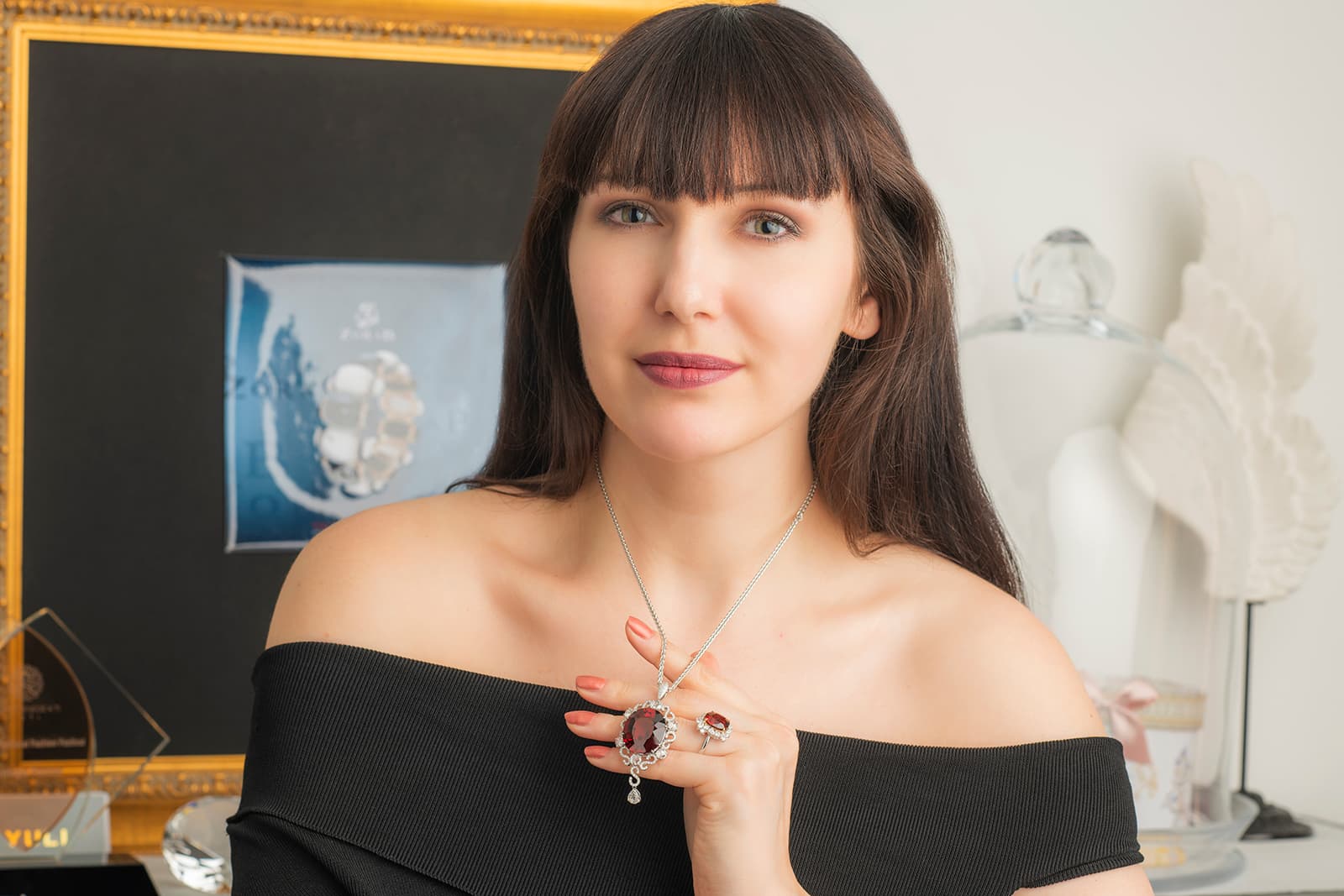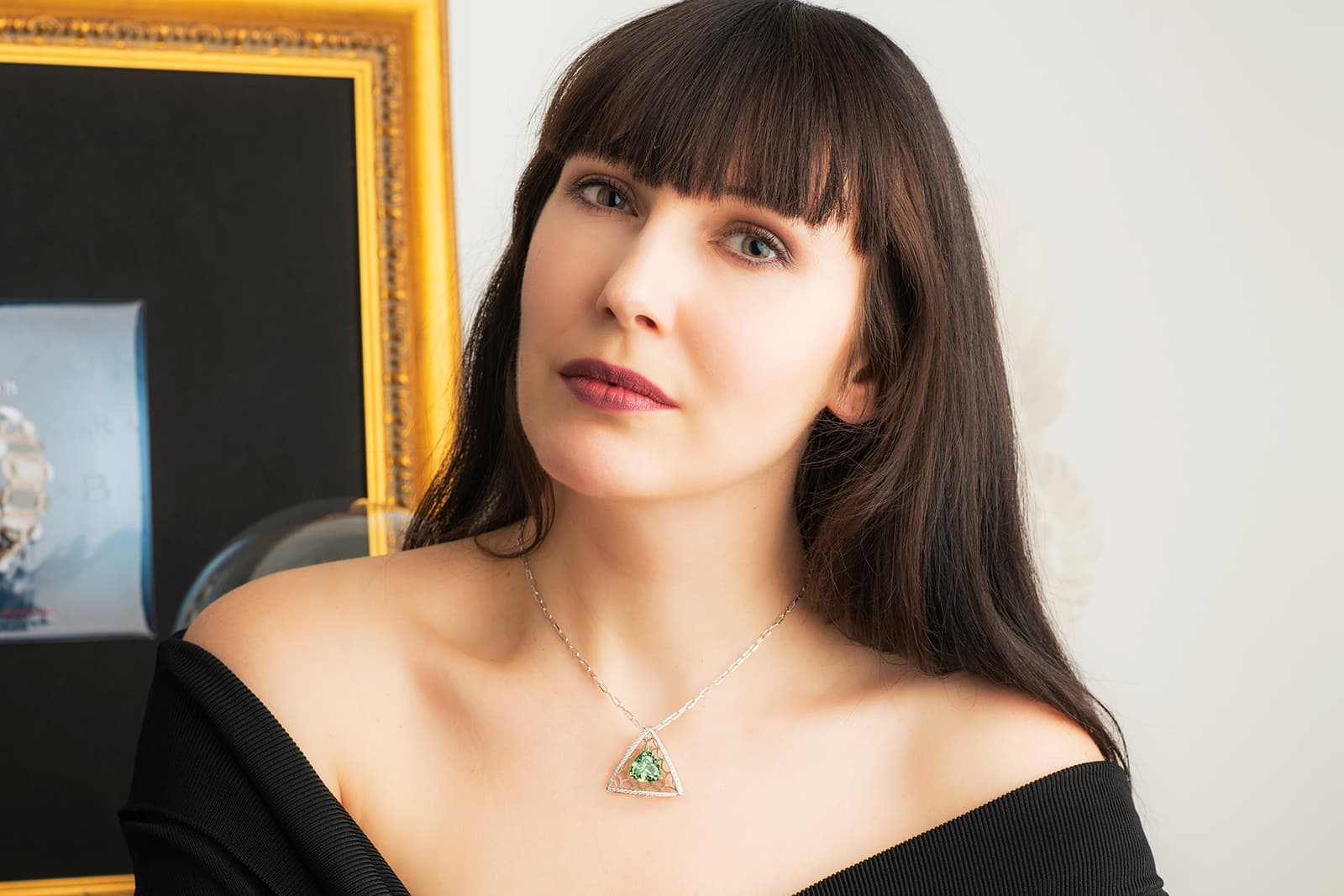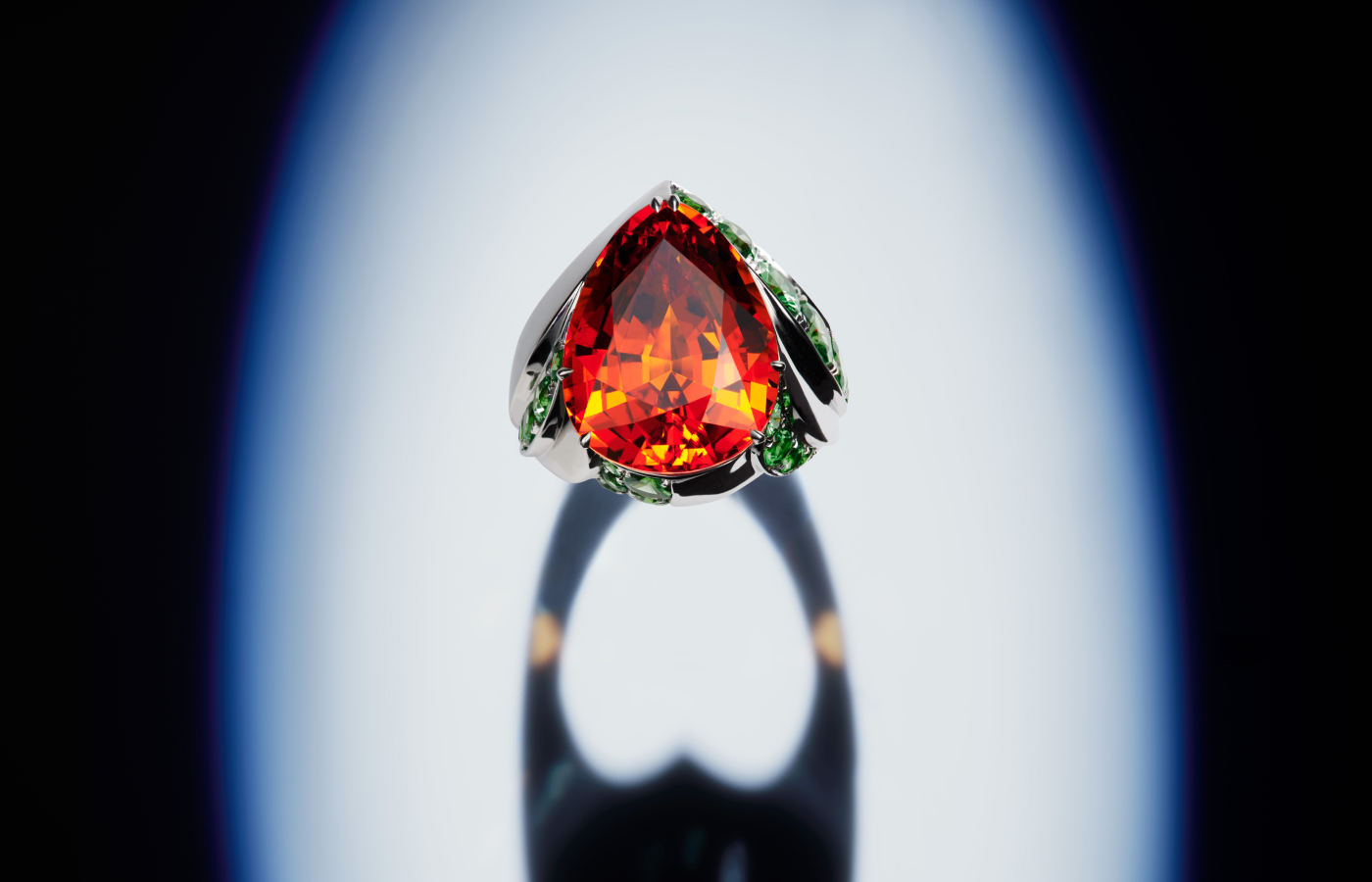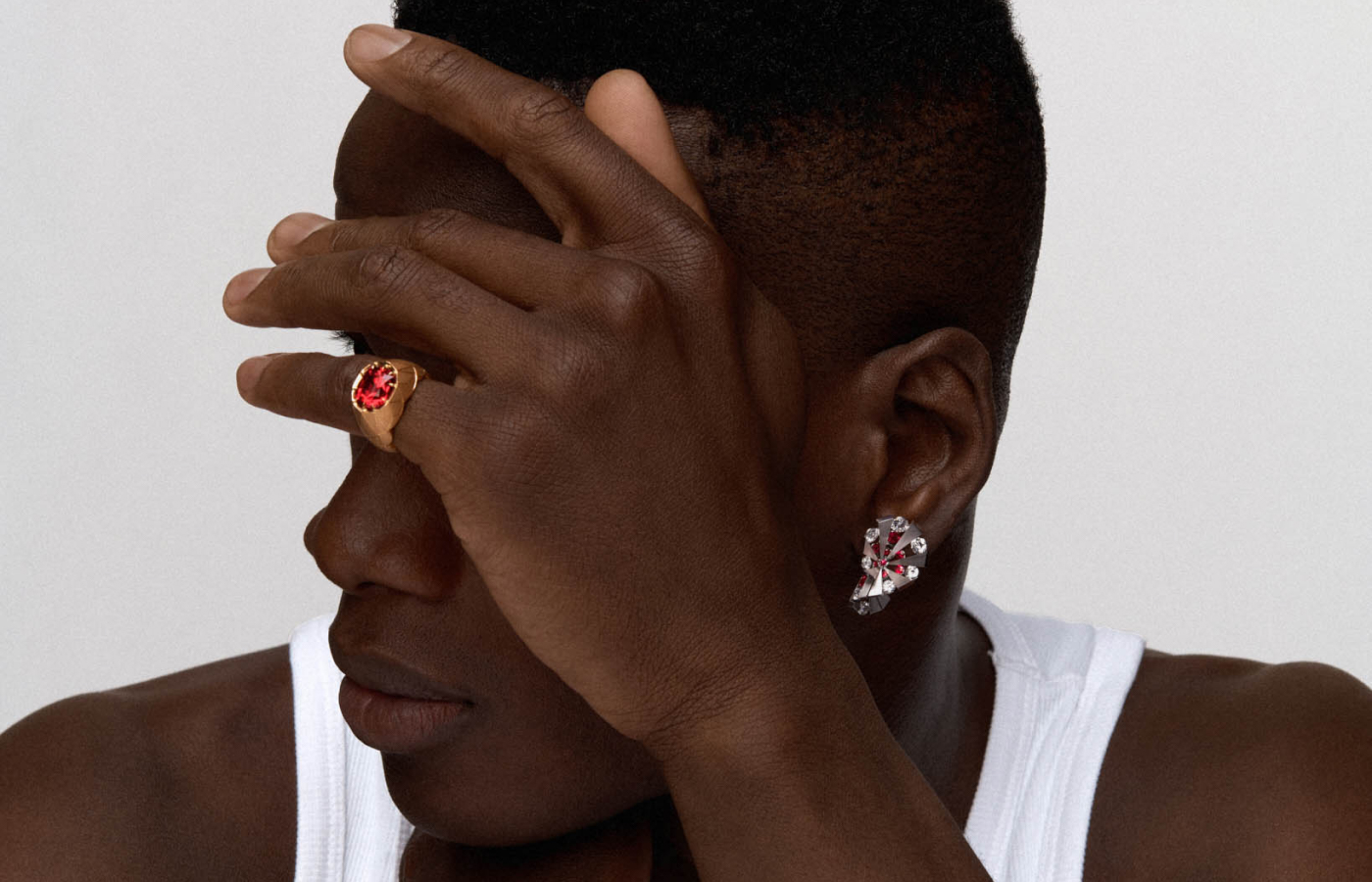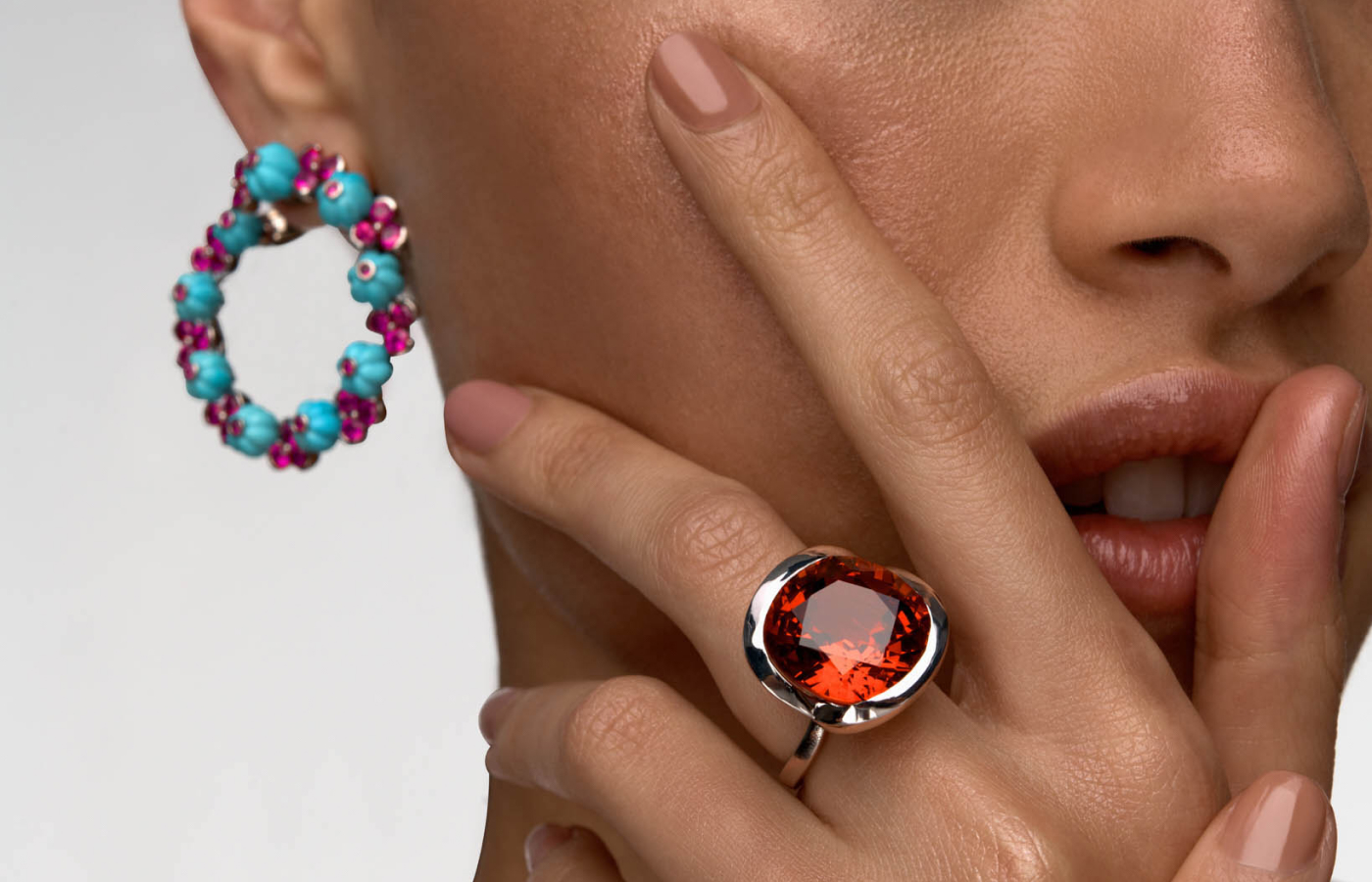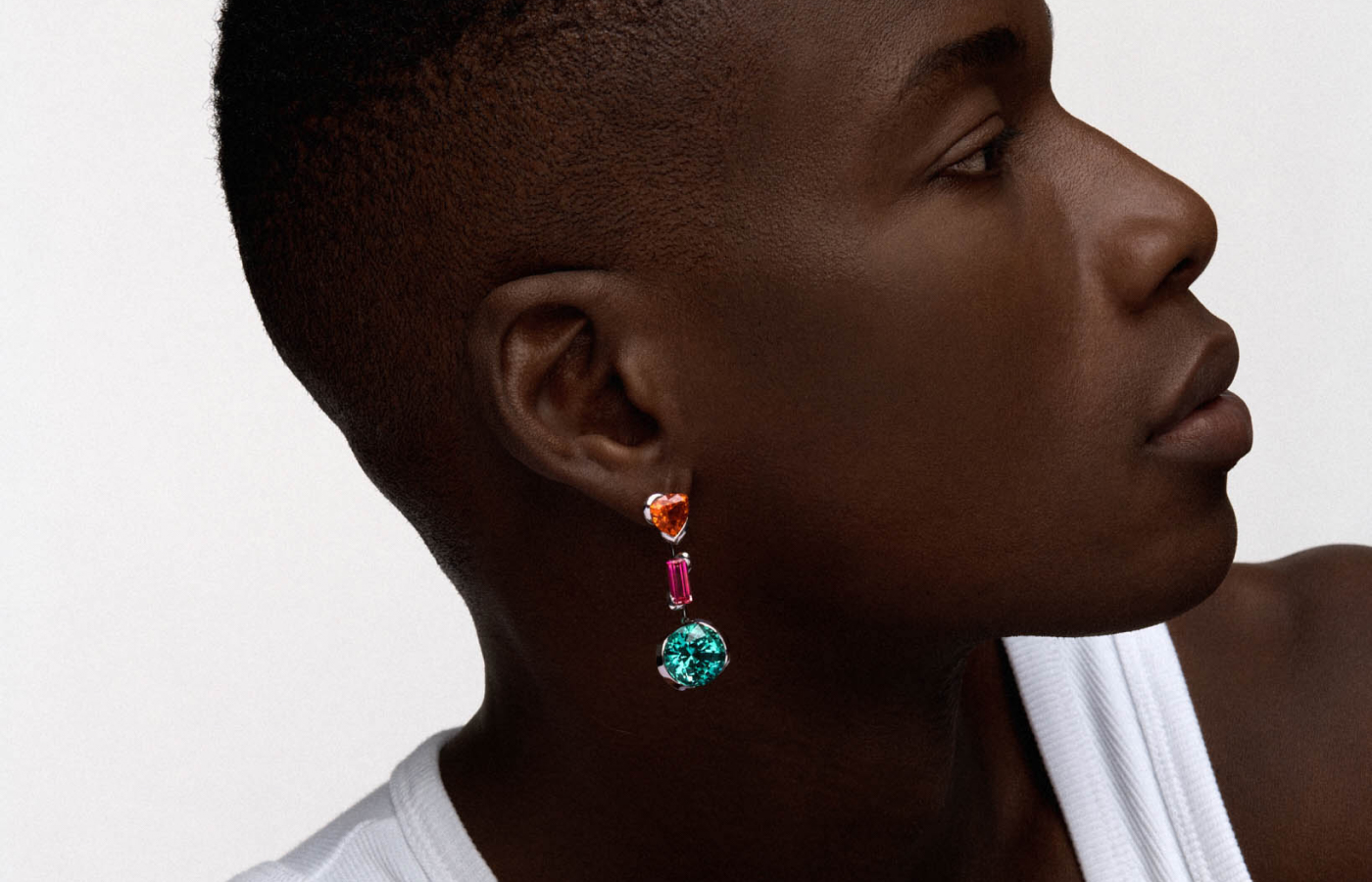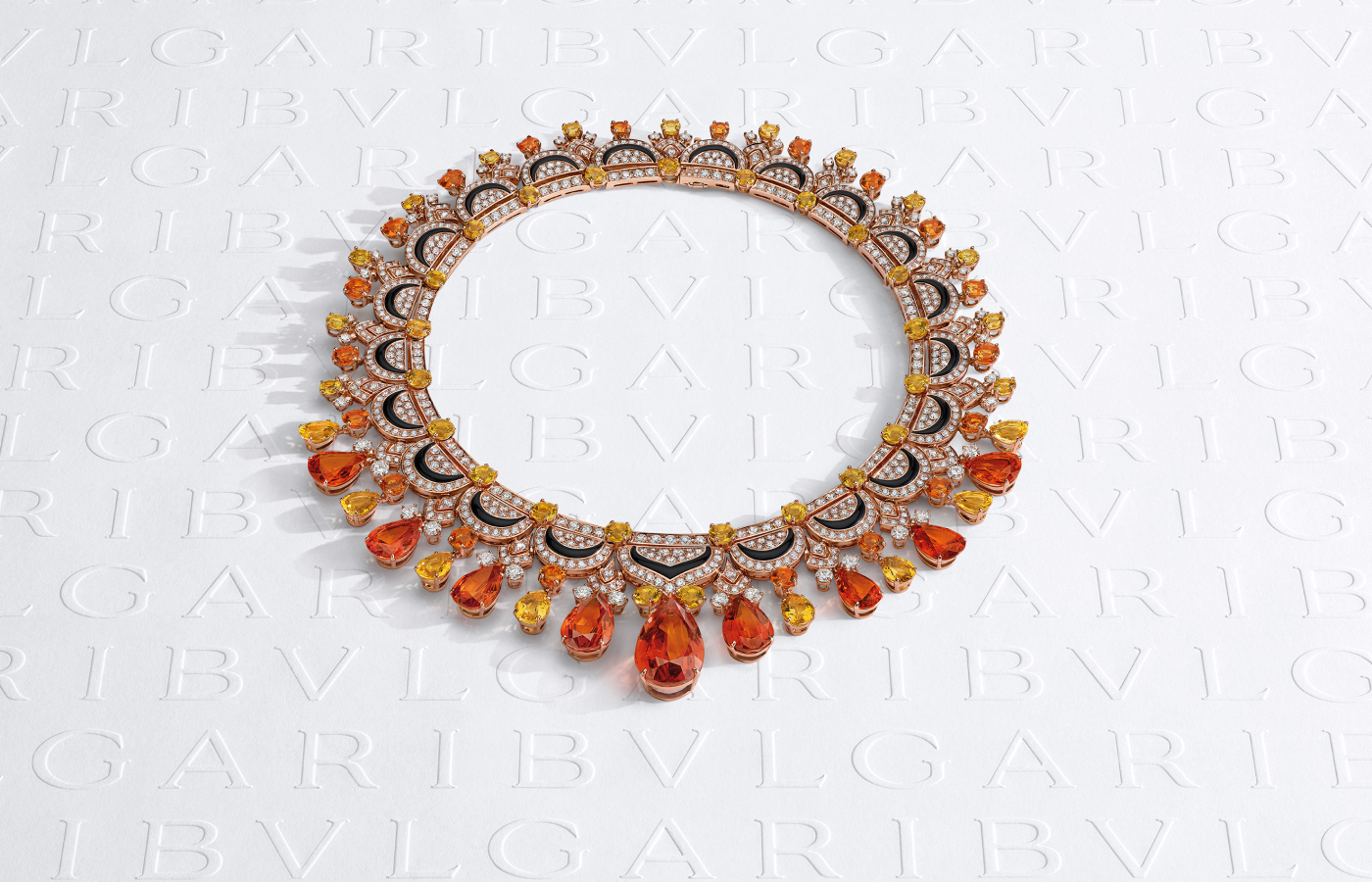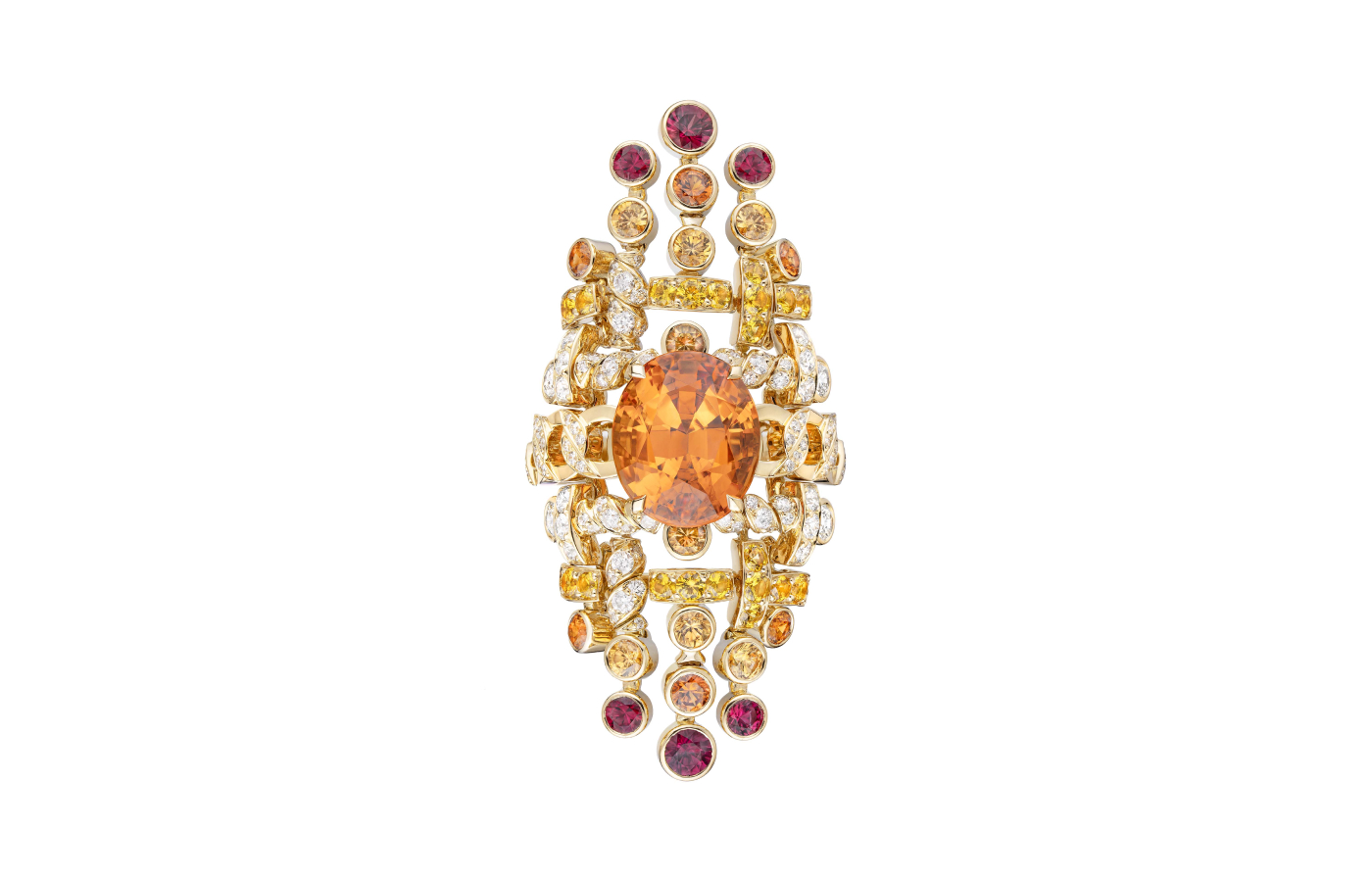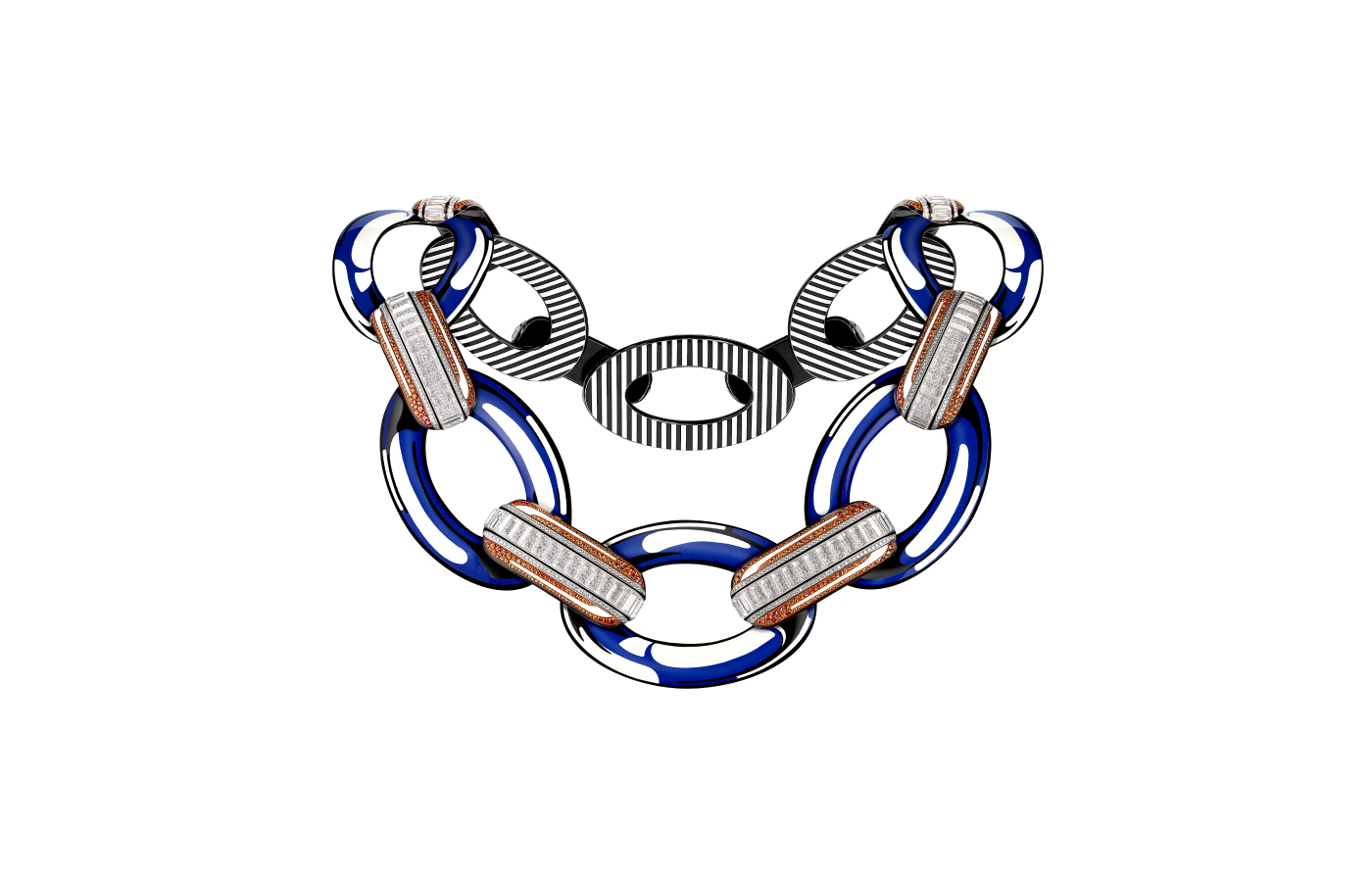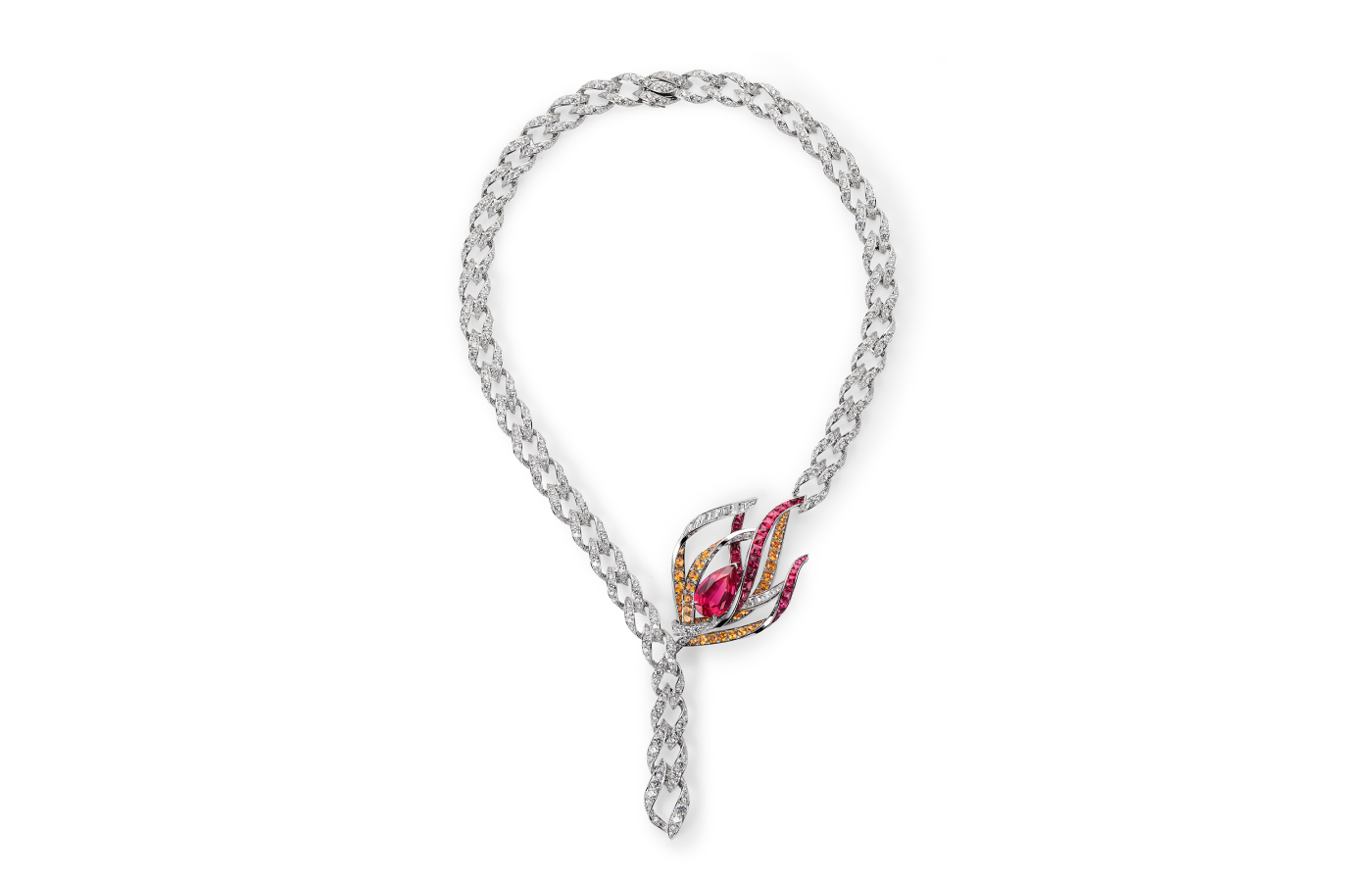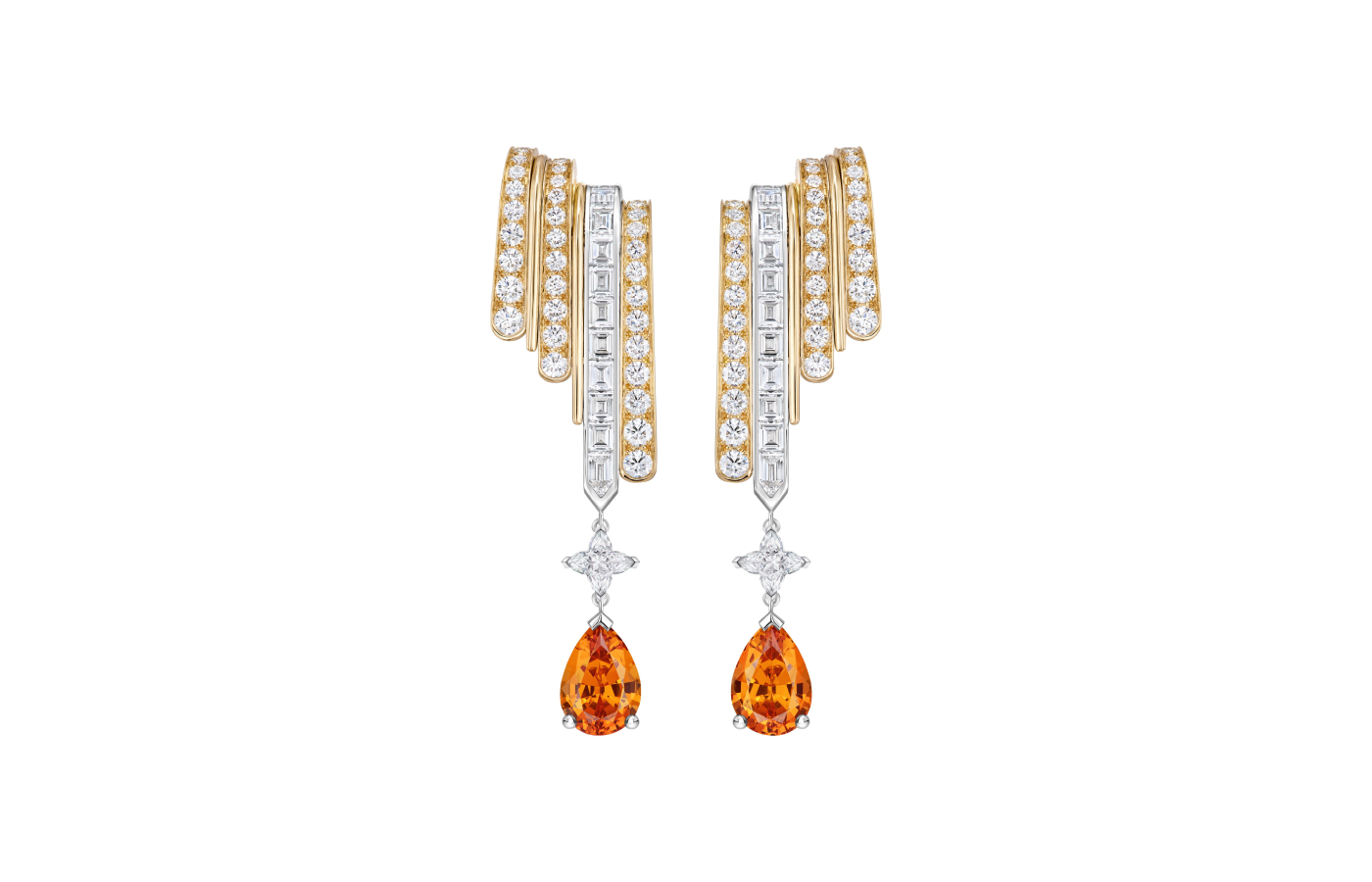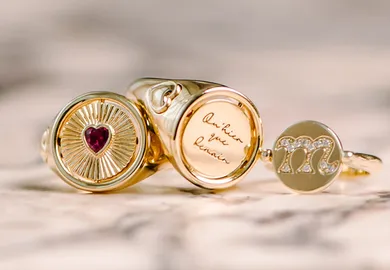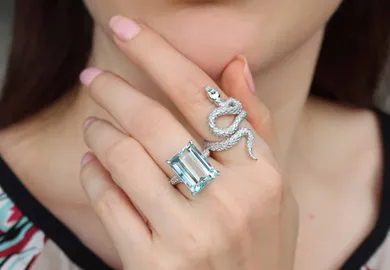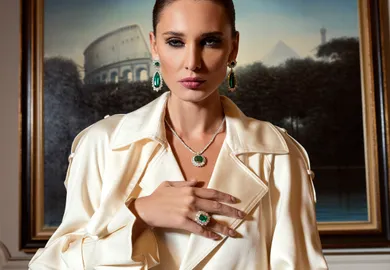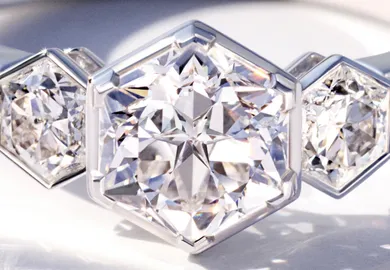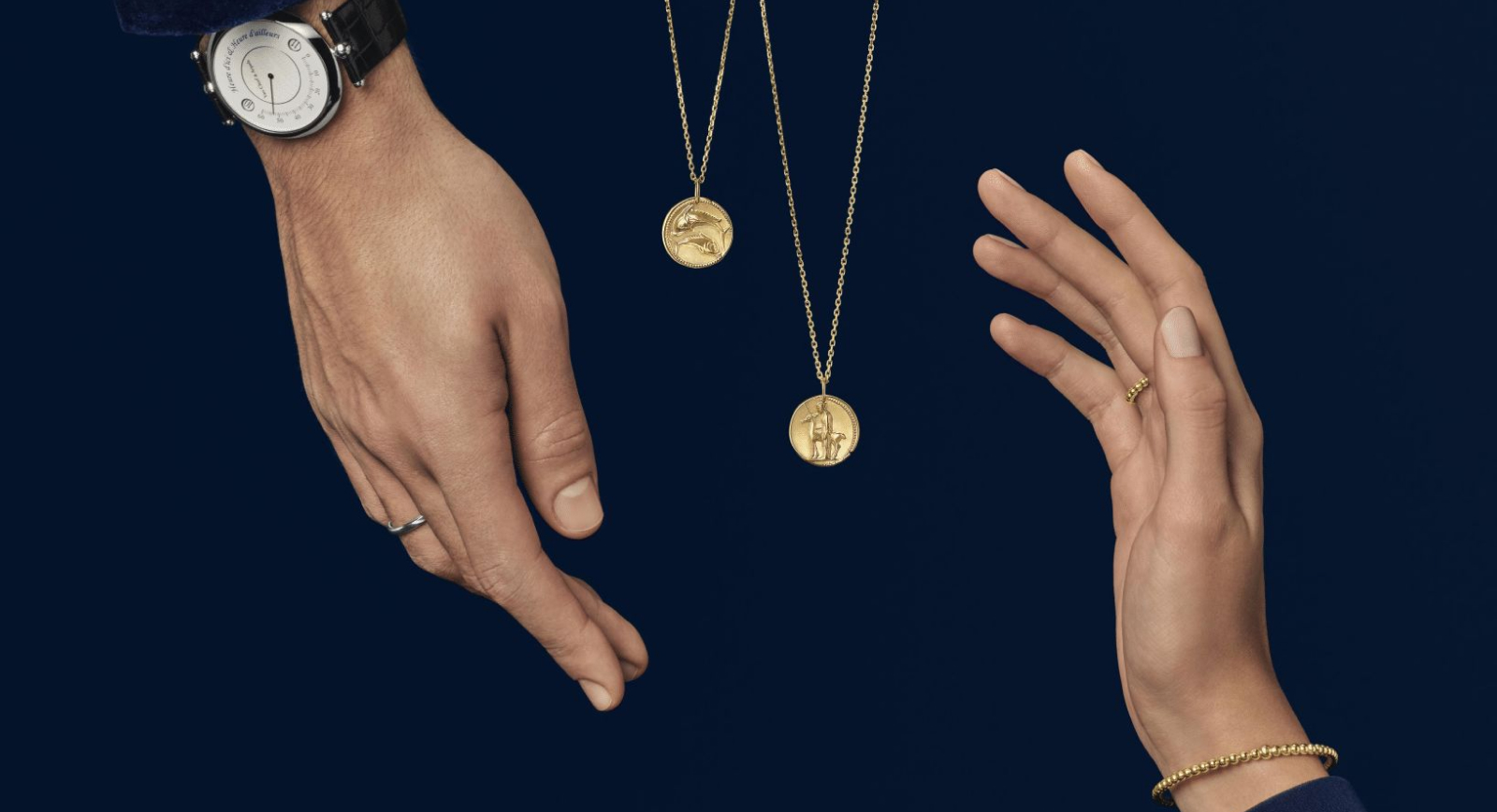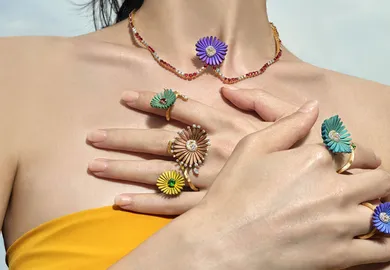

Garnets: A Gemstone Talisman for January Birthdays
Those born in January are lucky enough to call the juicy garnet their birthstone. This regal gem, named after the Latin word for the vividly red pomegranate fruit, has long been associated with wealth, fertility and royalty. Pharaohs are said to have worn necklaces studded with red garnets, whilst the Emperors of Ancient Rome would sign their important documents with wax stamps taken from their garnet intaglio signet rings. Opulent, colourful, and historic, let’s get to know this month’s birthstone a little bit better.
One of the oldest pieces of jewellery featuring garnet beads dates to more than five thousand years ago in Ancient Egypt, where it was found in an Egyptian grave. The tradition at the time was to bury important and wealthy individuals with their most treasured earthly belongings so that they could be taken with them to the afterlife. We are not surprised that this necklace was chosen to make such a journey.
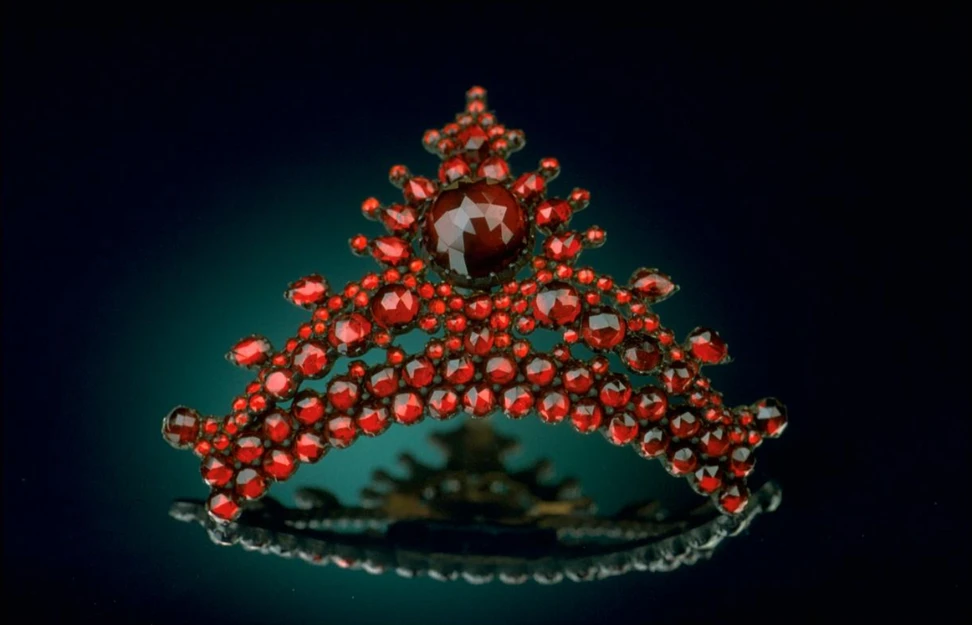
The Antique Pyrope Hair Comb, set with approximately 100 rose-cut pyrope garnets
Garnets are a valuable and versatile gem that have been used to adorn a variety of accessories for centuries. The Antique Pyrope Hair Comb is perhaps one of the most famous historic garnet pieces. Dating to the Victorian era, it’s set with approximately 100 rose-cut pyrope garnets, an extremely popular gem cut at the time.
Garnets are composed of a group of several minerals – pyrope, almandine, spessartine, grossular and andradite being the most important. Pyrope and almandine come in purple to red colourways, spessartine in vivid orange and yellow tones, whilst andradite (also called demantoid) is found in green hues. The grossular variety has perhaps the widest colour scale, being found in almost completely colourless tones through to yellow, orange, and red as well as the strong vibrant green gem we know as tsavorites. Although some garnets are readily available, a certain few are extremely rare. The electric green demantoid, fiery orange spessartite and deep red to purple rhodolite are perhaps the three most valuable varieties.
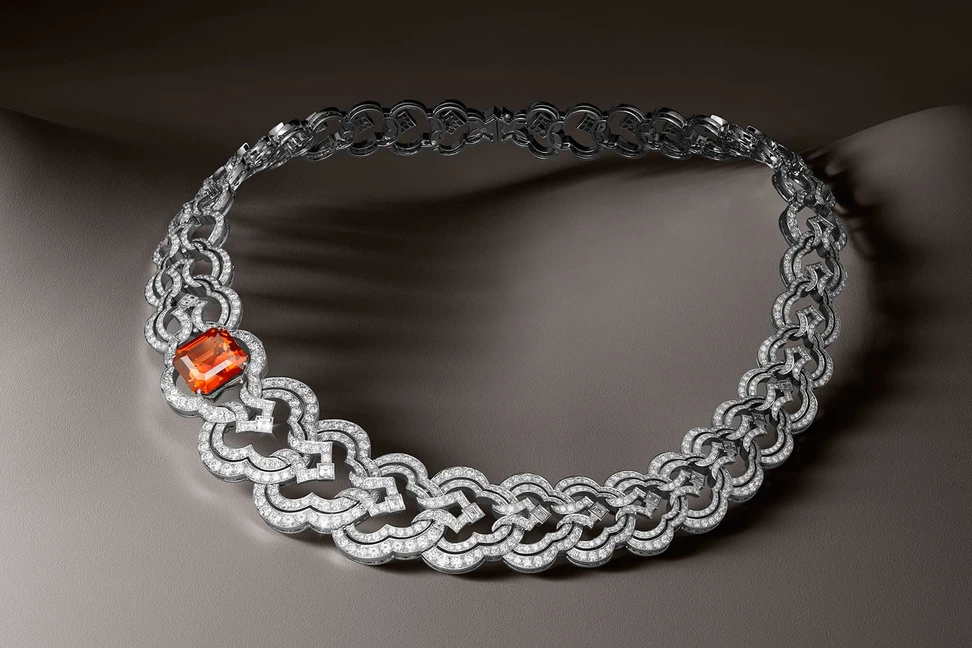
Louis Vuitton Conquêtes collection necklace with 16.82ct mandarin garnet and diamonds in white gold
Garnets are found in a variety of places around the world. Historically, Bohemia was the largest source, however today much of the world’s garnet stock comes from the African continent. Demantoid and spessartine garnets are mainly sourced from Namibia, whilst tsavorites are brought from Kenya, Tanzania and Madagascar. Garnets can also be mined in Myanmar, Brazil, Iran, Afghanistan, Pakistan, India and Sri Lanka. However, don’t let their prevalence fool you into thinking these are cheap gems. The market is oversaturated with these minerals, meaning that ones of exceptional quality are hard to come by. As well as this, tsavorites and spessartites are rarely found naturally and are especially rare in high carat weights.
The rarity of certain garnets has caught the eye of high jewellery houses the world over, many of which choose to create exceptional one-of-a-kind pieces featuring the January birthstone as their focal point. In its Mediterranea high jewellery collection, Bulgari created the Oriental Fantasy necklaces, which boast over 90 carats of mandarin garnets of outstanding quality. Paired with vibrant citrines to further accentuate their warm orange colouring, the inspiration behind this necklace was to evoke the earthy hues of Northern African spice markets. Chanel’s Tweed de Chanel high jewellery collection also boasts an exceptional selection of spessartite garnets. The Tweed Gabrielle ring has an oval-cut 10.48-carat spessartite garnet at the heart of its design, and the matching Tweed Gabrielle necklace has one of 12.64 carats. Similarly, Boucheron, Chaumet and Louis Vuitton all used garnets to express their love of colour and artistry in their latest high-jewellery creations.
When it comes to garnets, you might be spoiled for choice, however, the quest for quality is of the utmost importance and one that is rarely found. Below is a selection of jewellery pieces by brands who have sought out the most beautiful garnets on the market to make perfect creations for the special January baby in your life, even if it’s yourself!
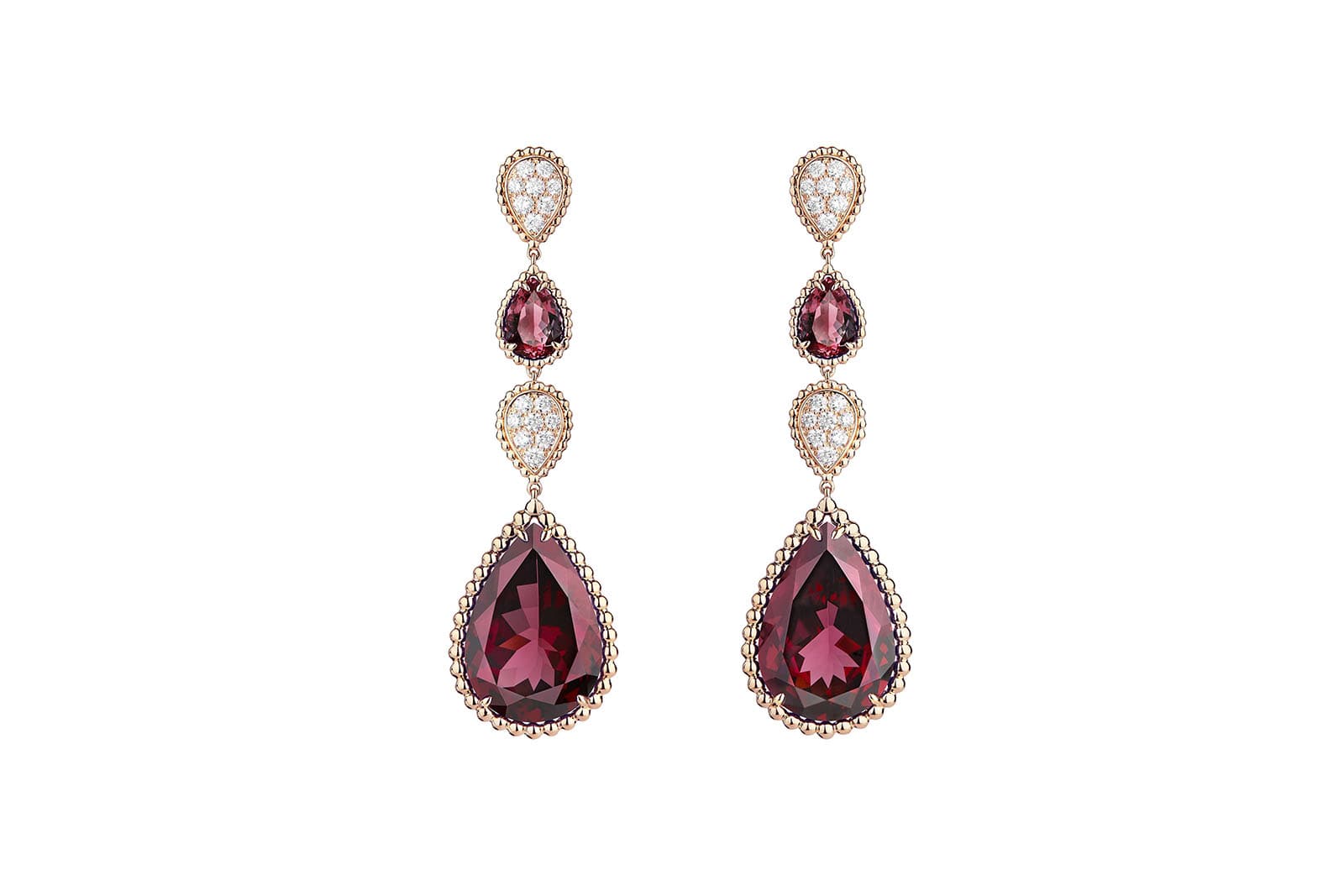
Boucheron
Boucheron
Serpent Boheme earrings with rhodolite garnets and diamonds in rose gold
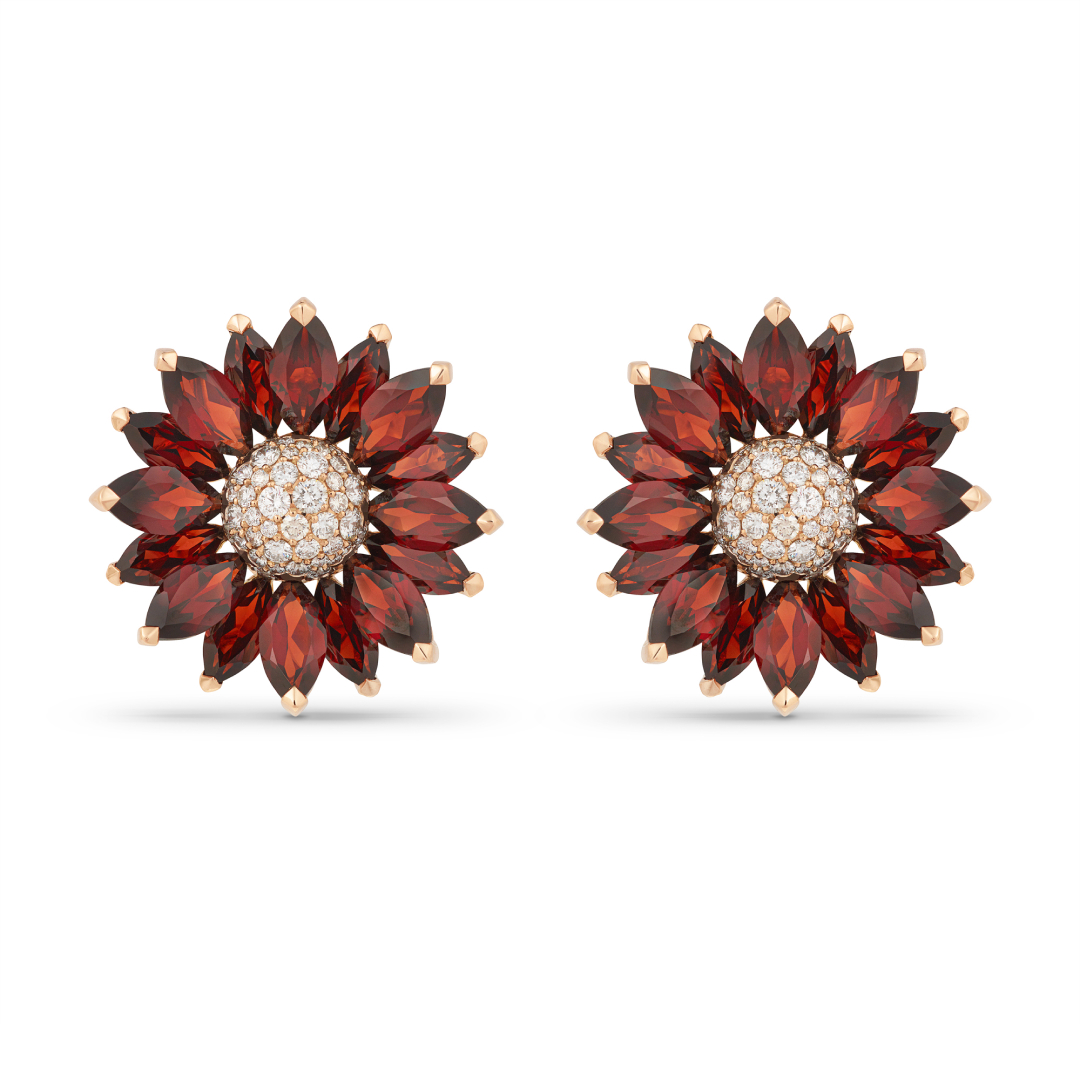
Asprey
Asprey
Daisy ring in gold, garnet and diamond
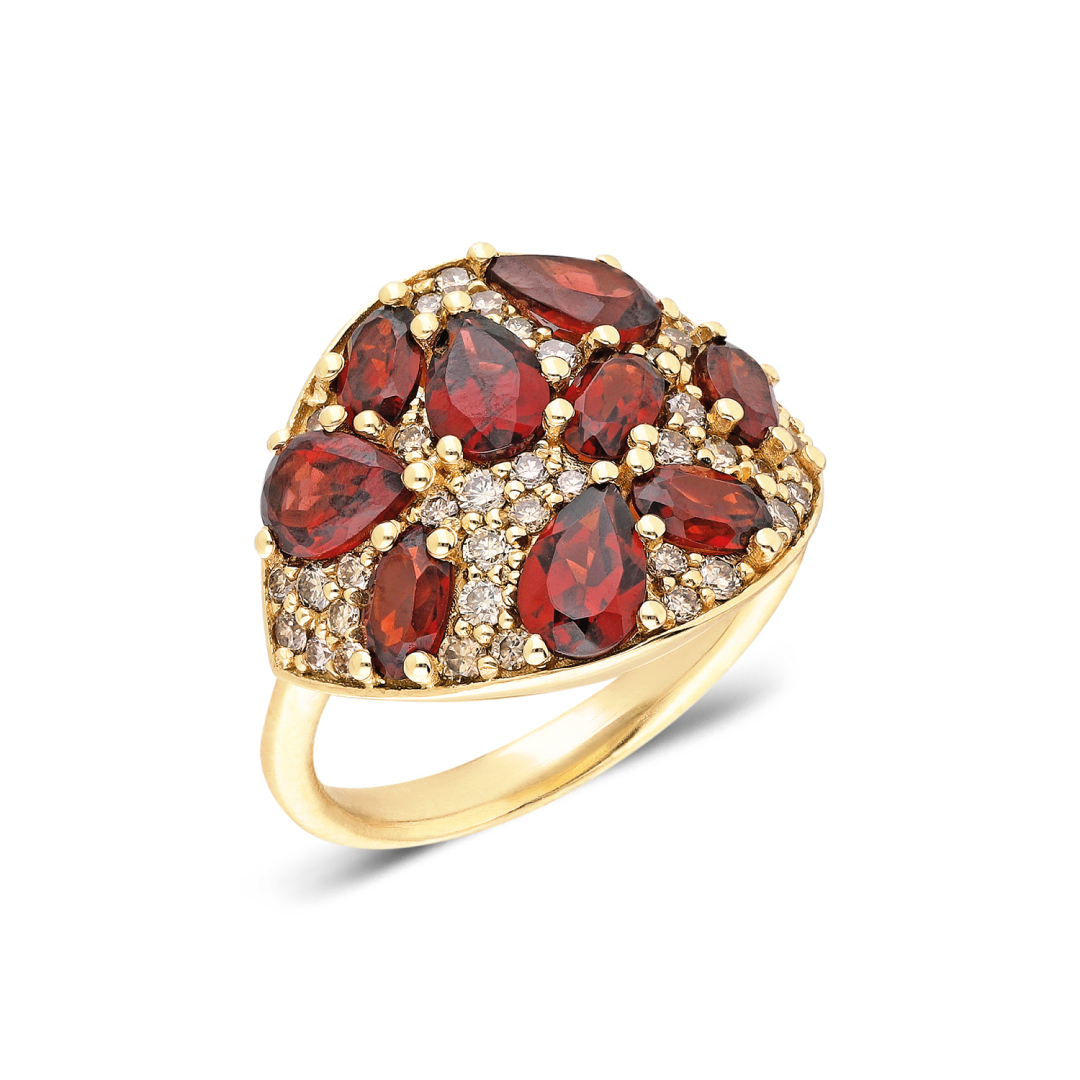
ITA
ITA
Ring in gold, garnet and diamond
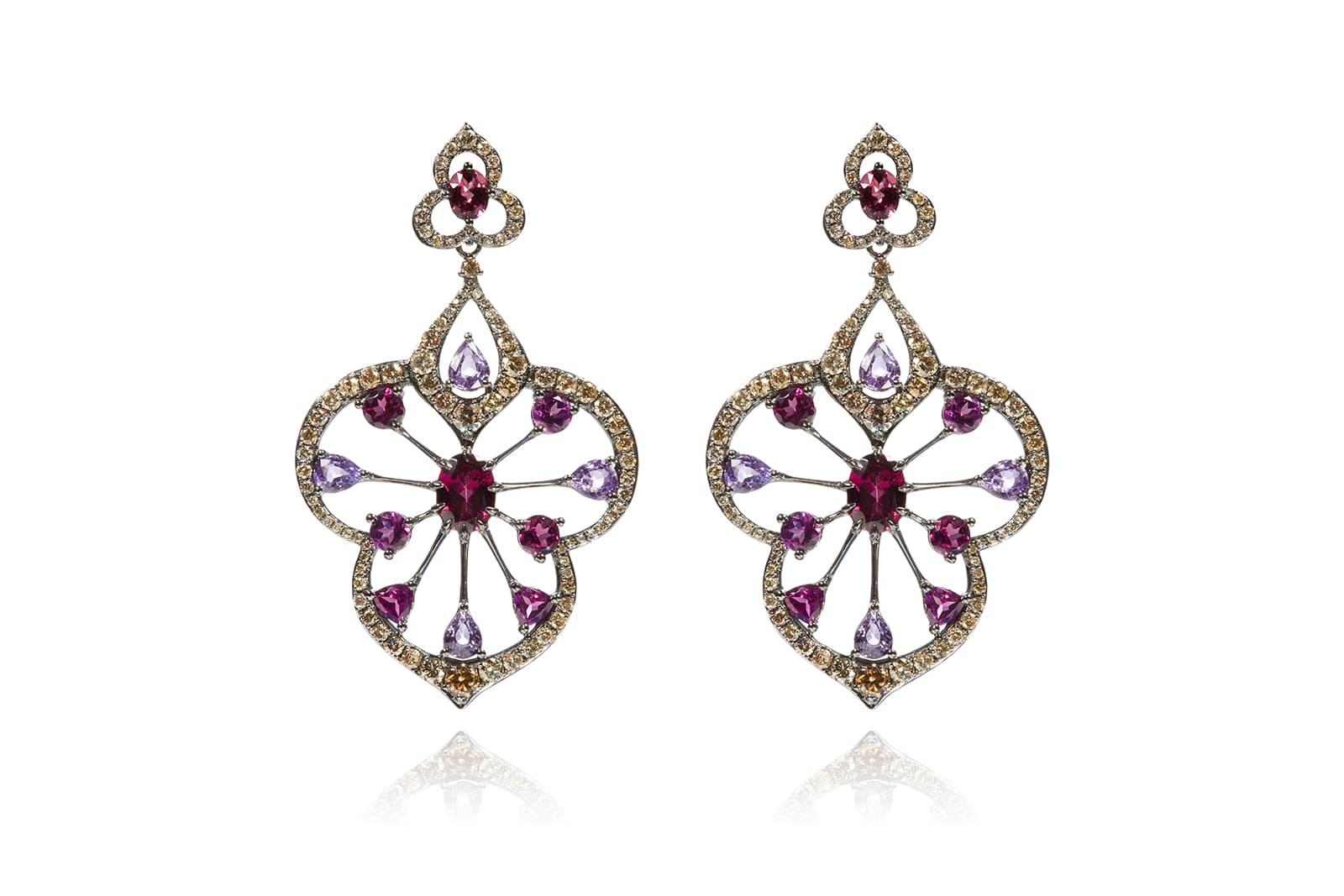
Annoushka
Annoushka
Earrings with imperial garnets, sapphires and diamonds in white gold
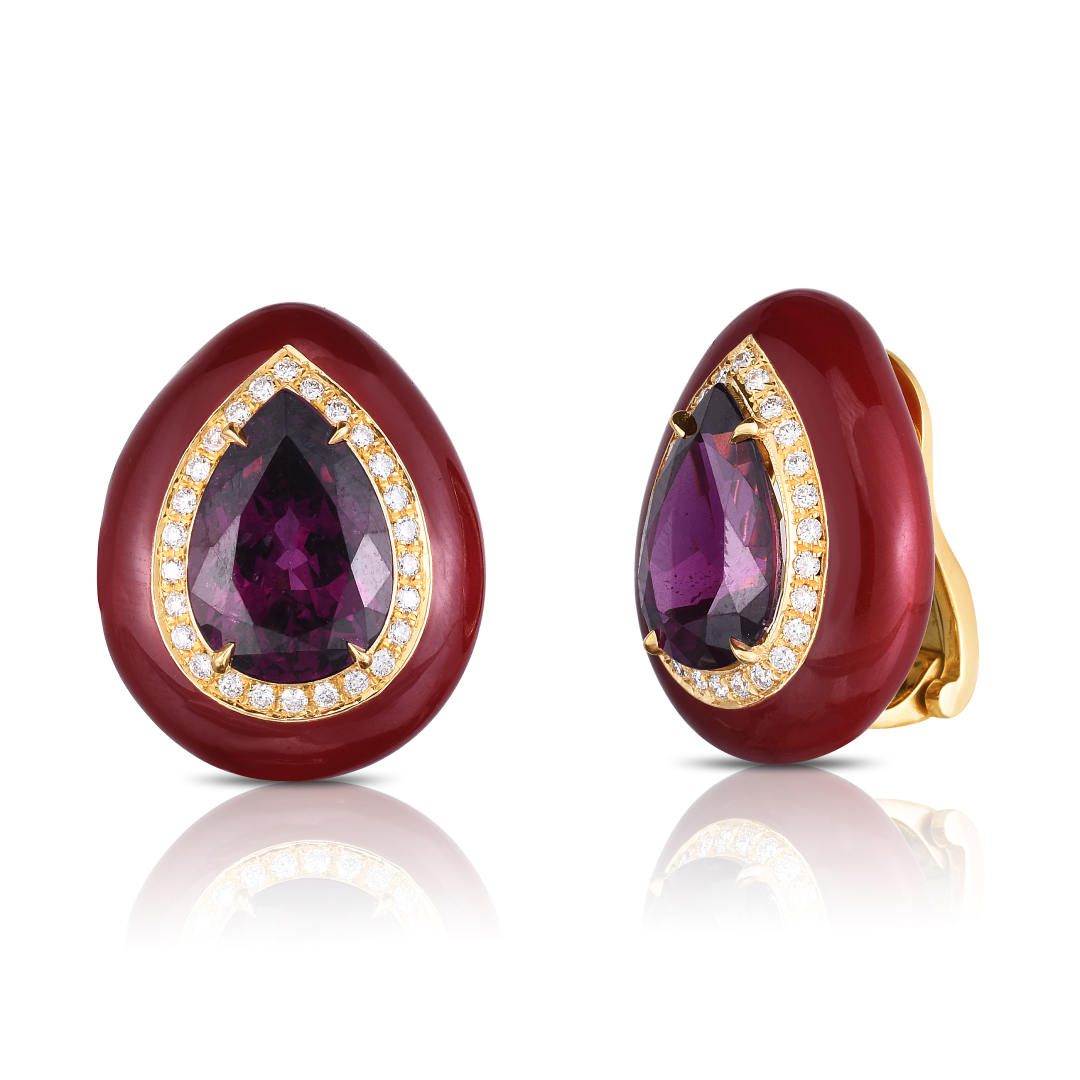
CICADA
CICADA
Earrings in gold, enamel, garnet and diamond
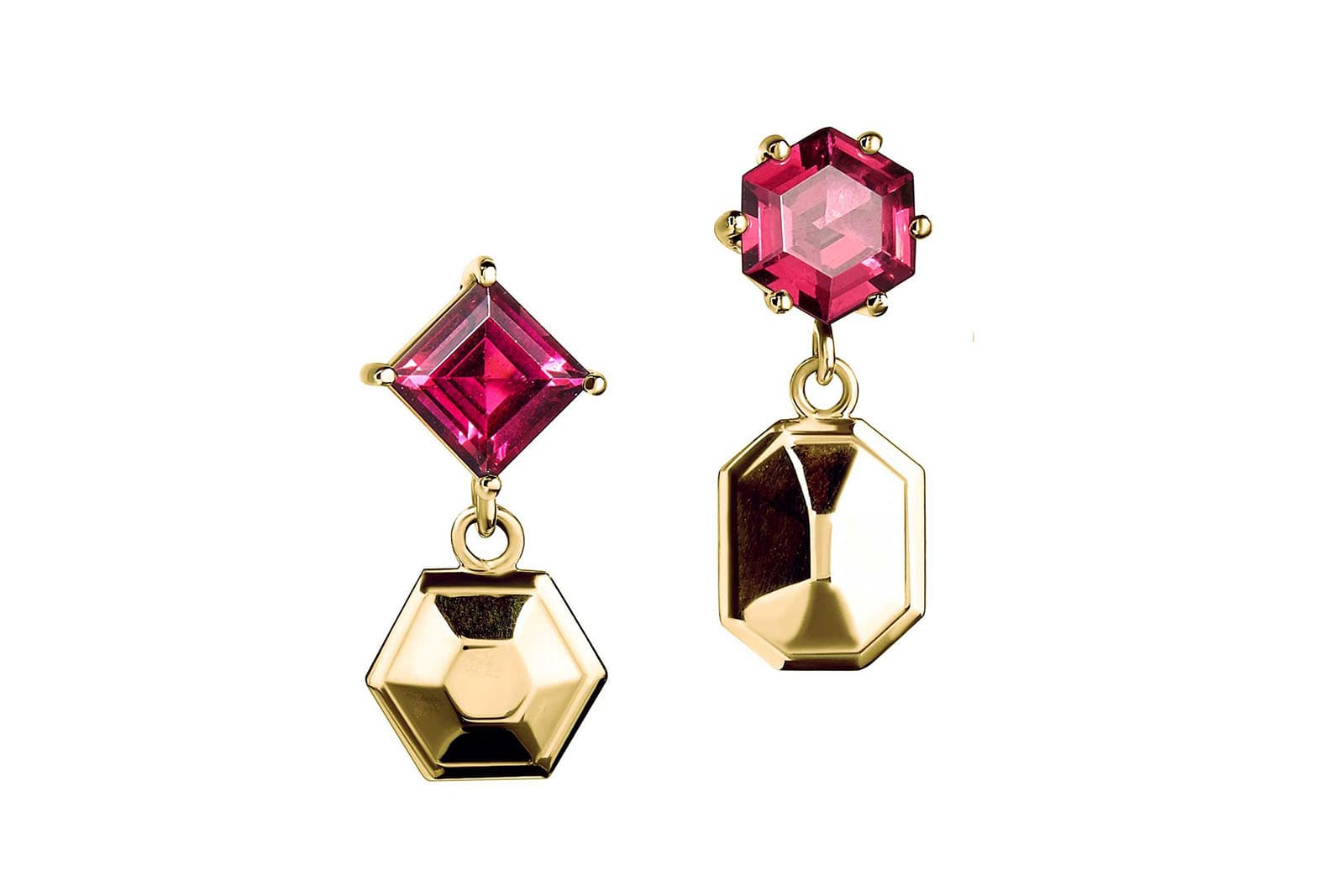
Tessa Packard
Tessa Packard
Puzzle earrings with rhodolite garnet in yellow gold
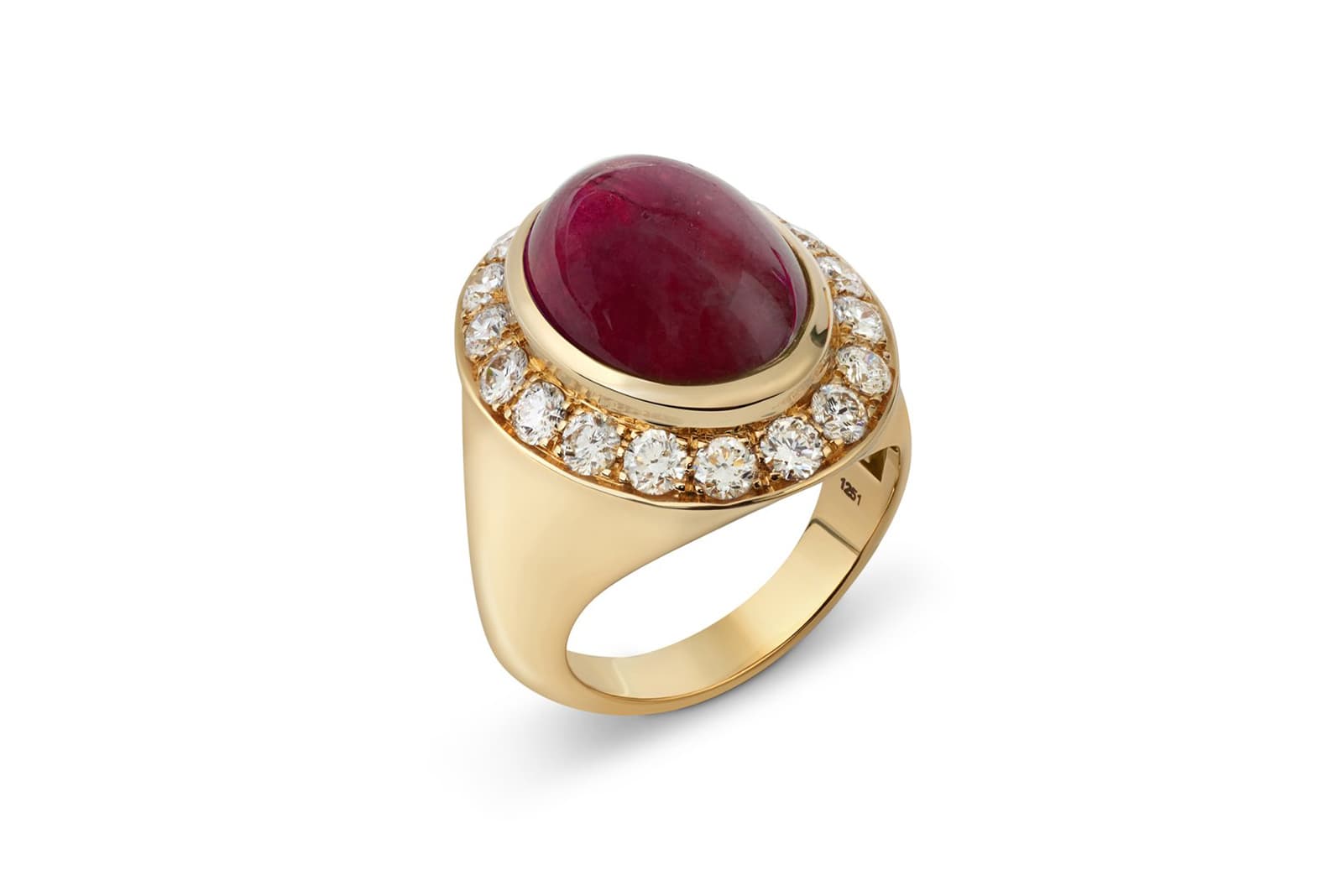
Niquesa
Niquesa
Ring with cabochon garnet and diamonds in yellow gold
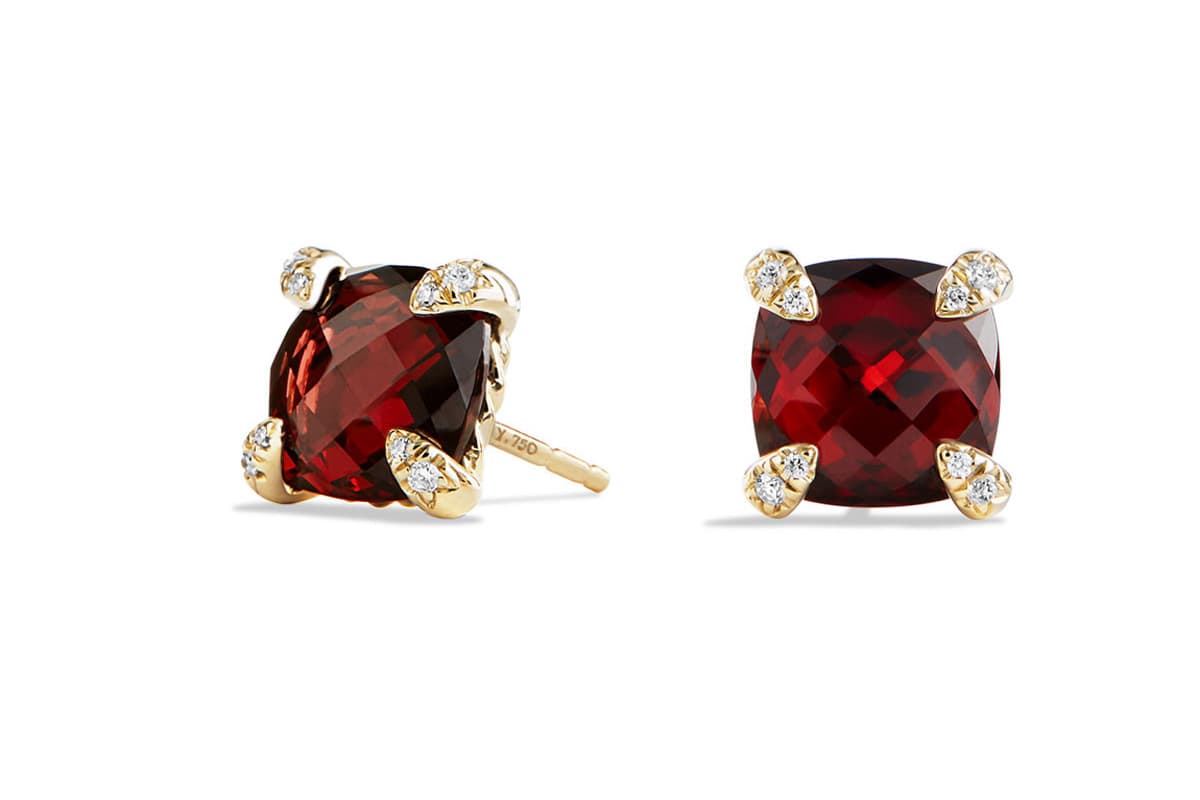
David Yurman
David Yurman
Châtelaine earrings with garnet and diamonds in yellow gold
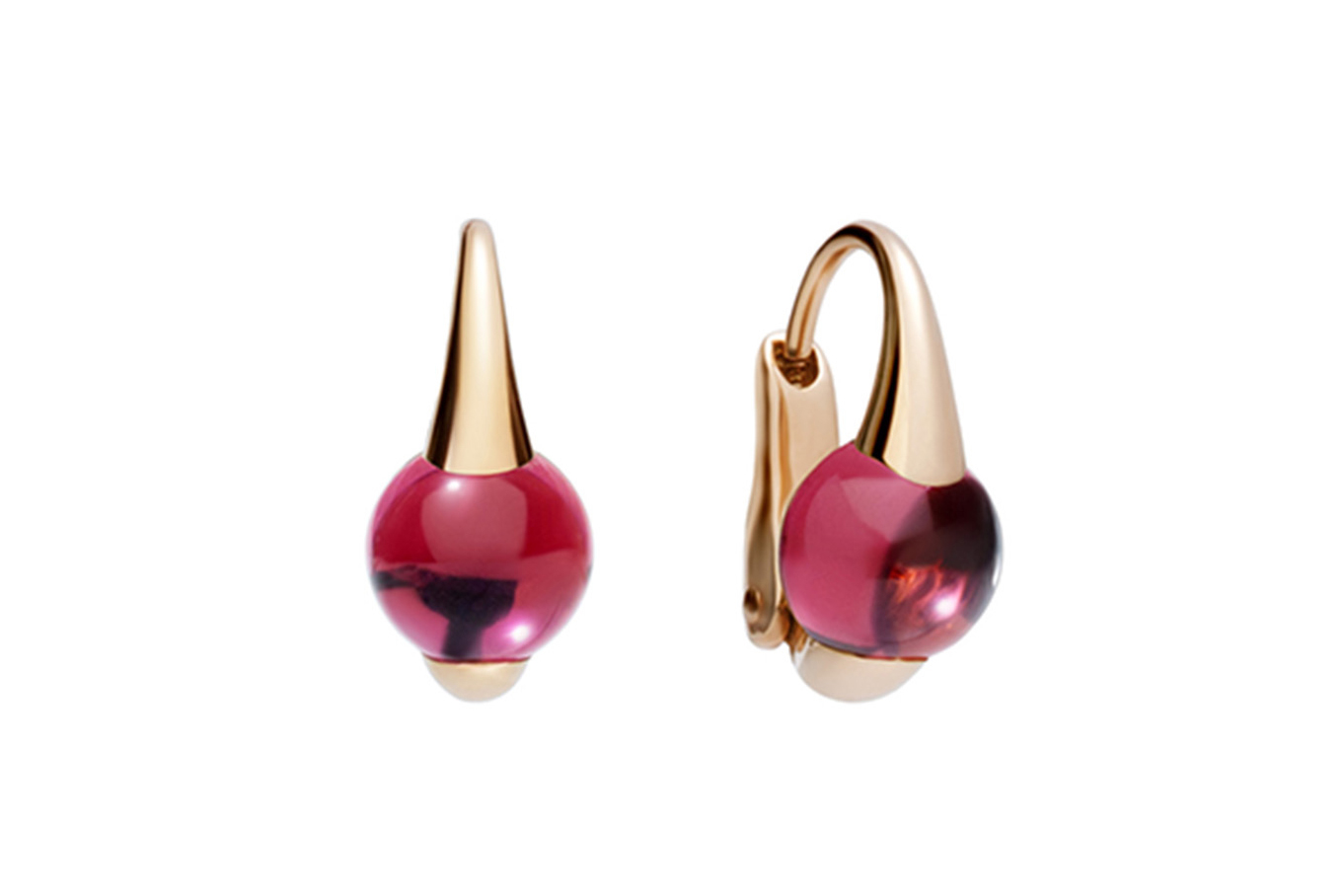
Pomellato
Pomellato
M'ama Non M'ama collection earrings with rhodolite garnet in rose gold
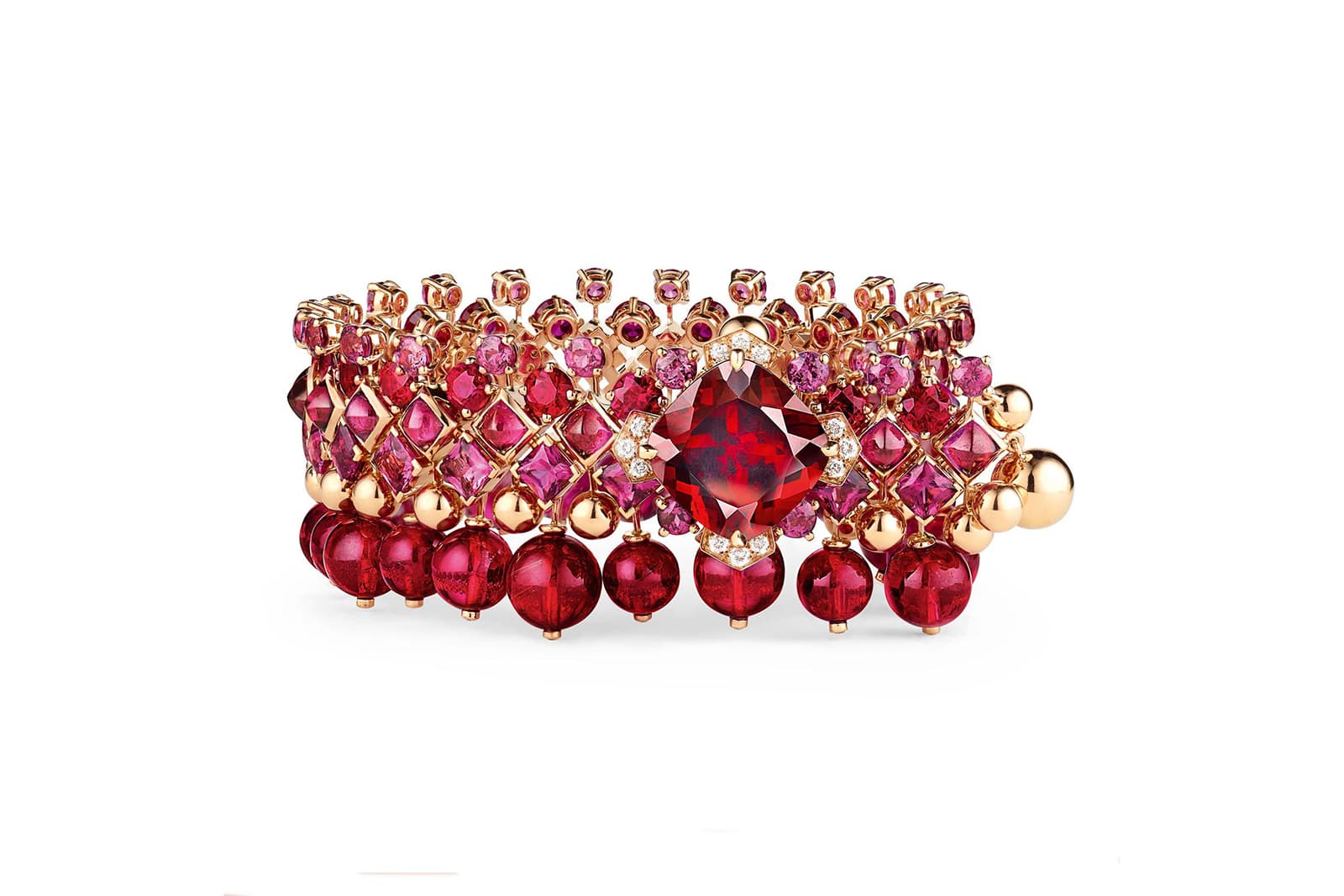
Chaumet
Chaumet
Chaumet Aria Passionata bracelet with 9.19ct rhodolite garnet, rubies, tourmalines and diamonds in rose gold and lacquer from the Chaumet est Une Fête collection
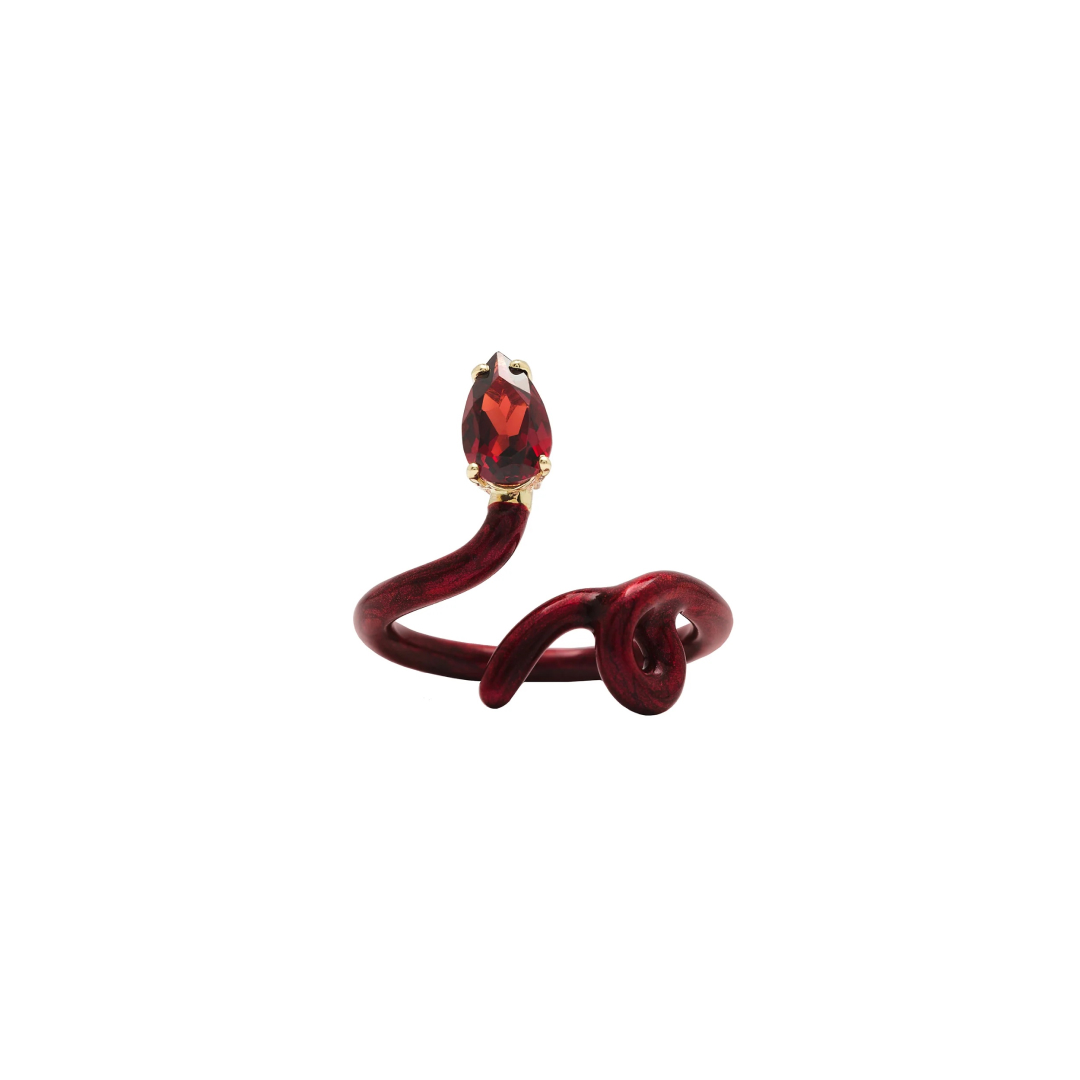
Bea Bongiasca
Bea Bongiasca
Baby Vine Tendril ring in gold, burgundy enamel and garnet
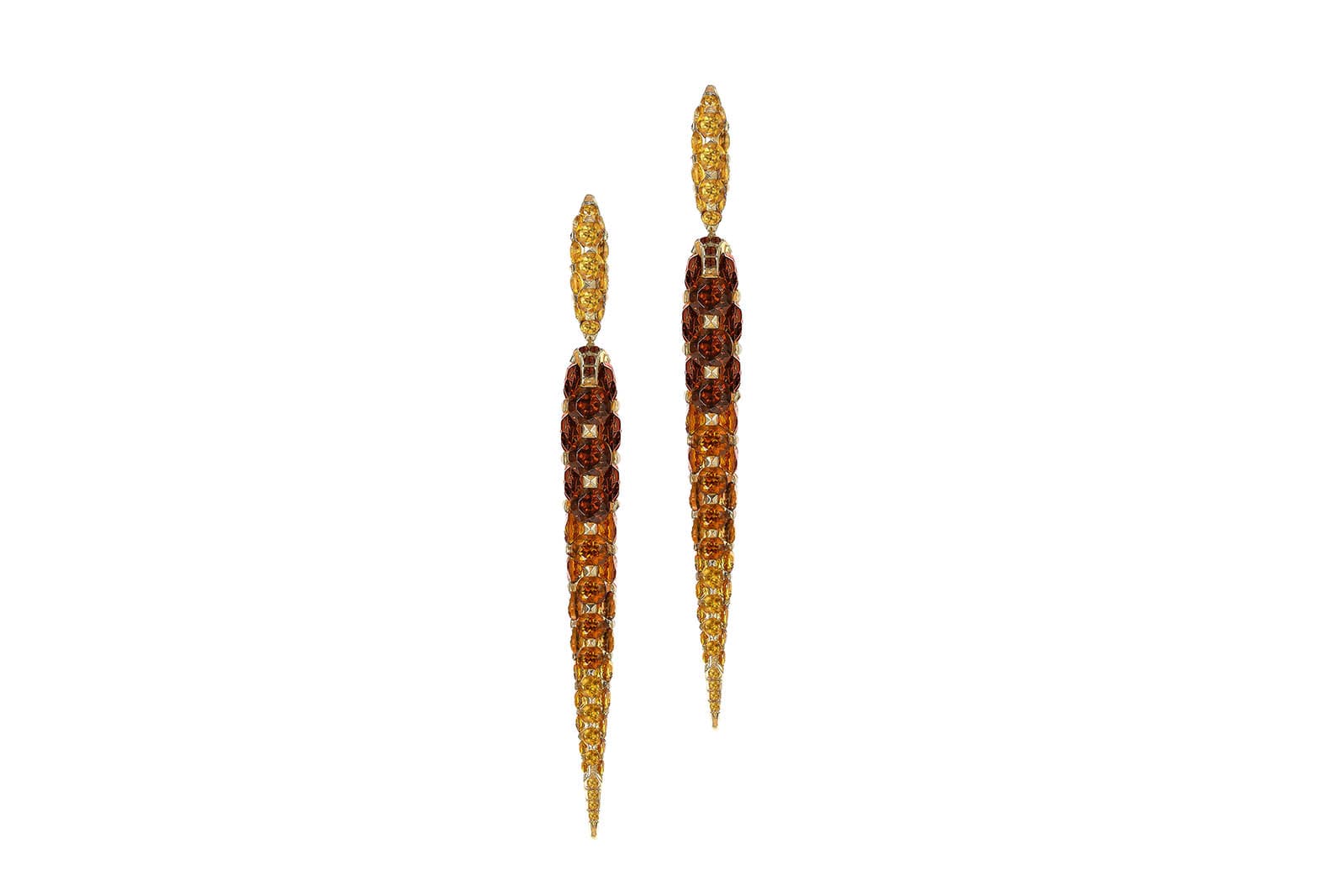
Boghossian
Boghossian
Limited edition earrings Merveilles Icicle drop earrings with brown, orange and yellow garnets in yellow gold
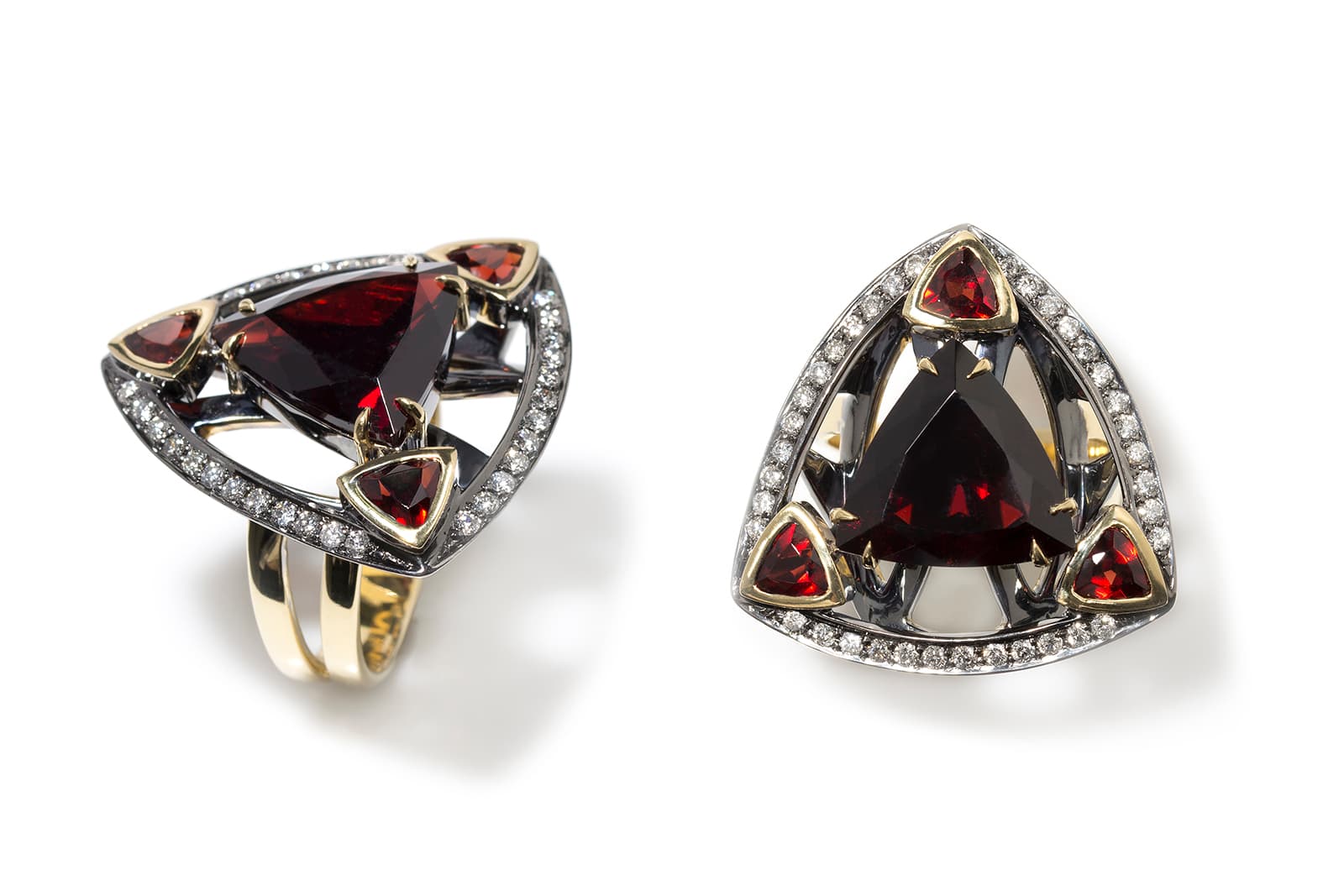
Ara Vartanian
Ara Vartanian
Earrings with 8.55ct garnets and diamonds in blackened and yellow gold
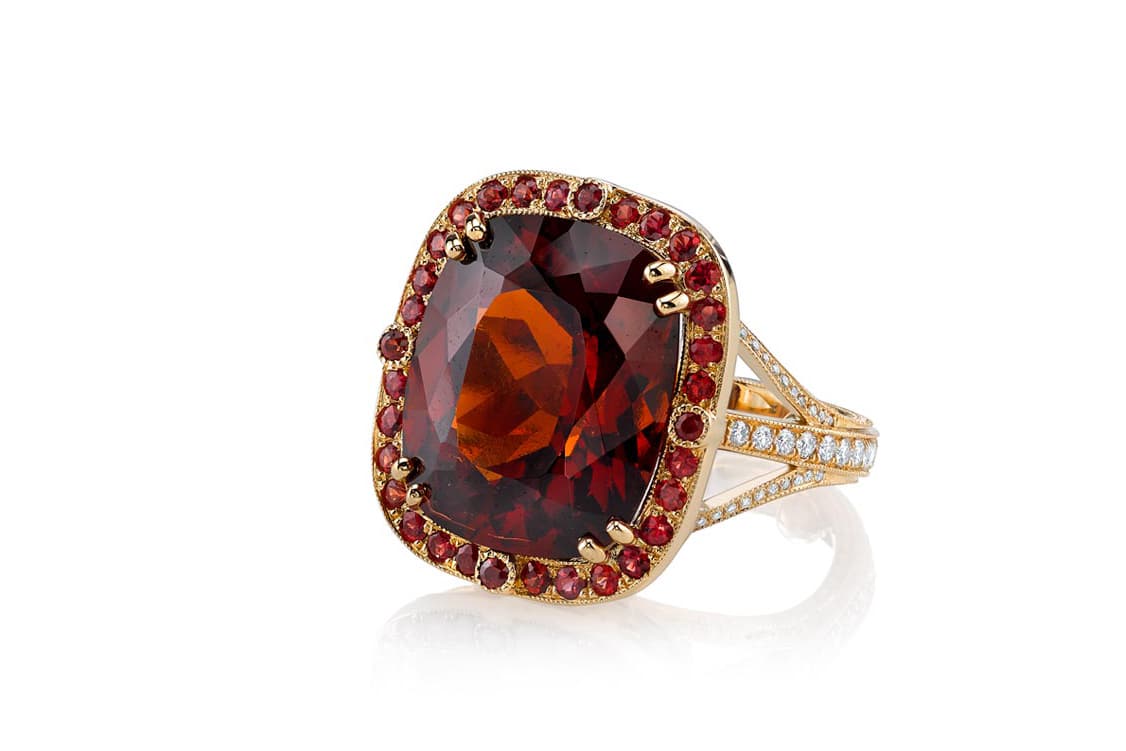
Erica Courtney
Erica Courtney
Cathedral ring with 17.38ct spessartite garnet, rubies and diamonds in yellow gold
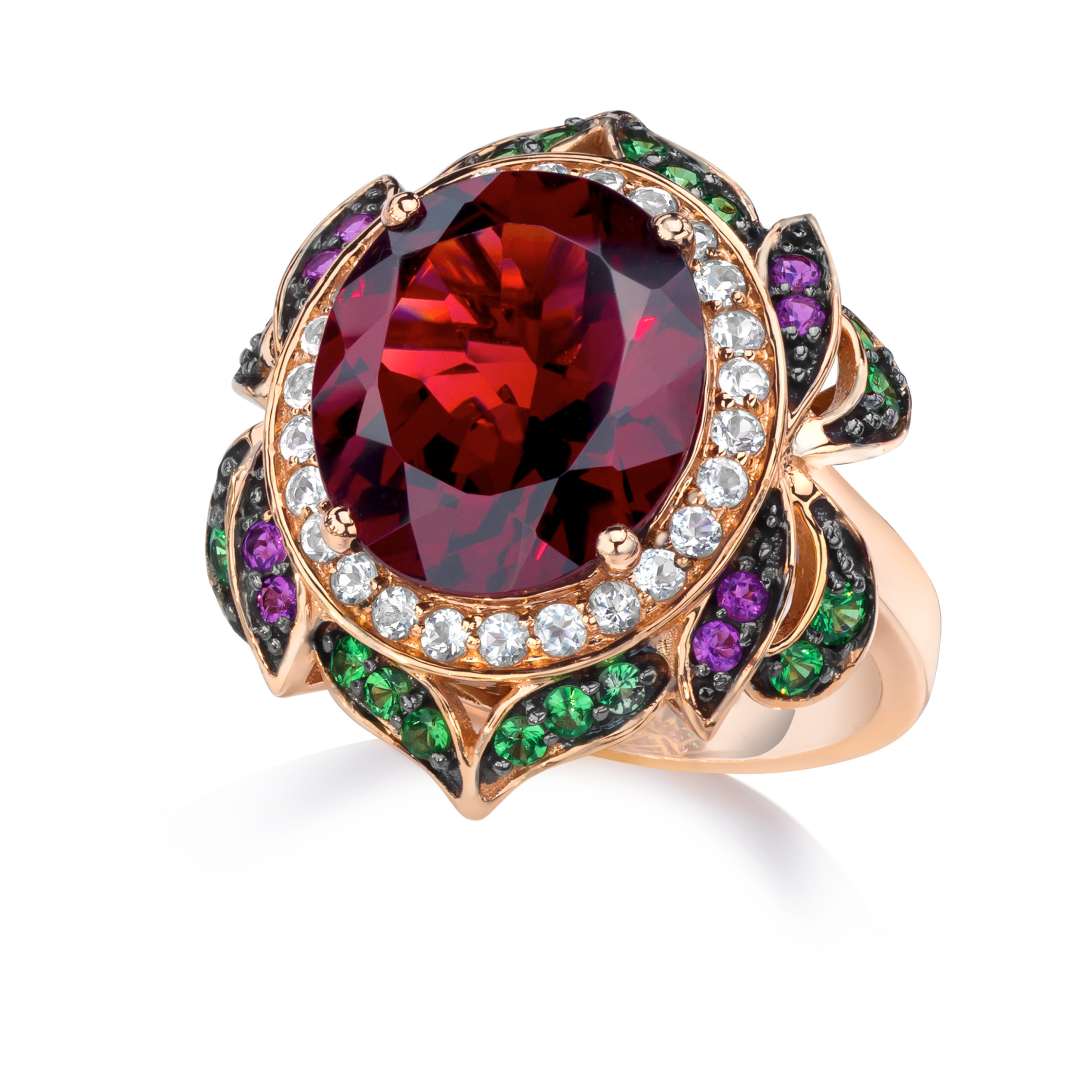
Le Vian
Le Vian
Ring in Strawberry gold, garnet, tsavorite, topaz, amethyst and diamond
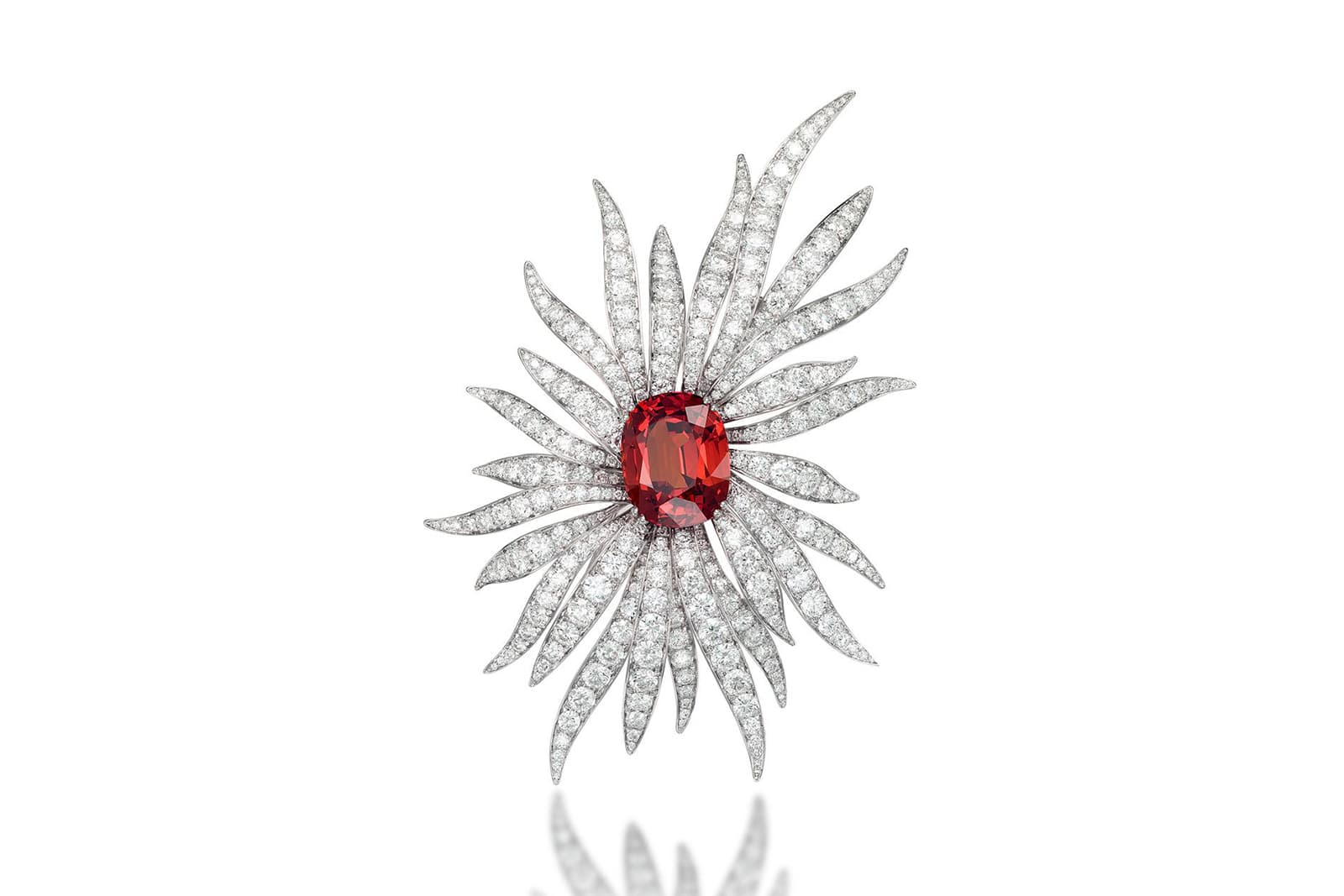
Picchiotti
Picchiotti
Brooch with 28.67ct cushion cut spessartite garnet and 26.39ct diamonds in white gold
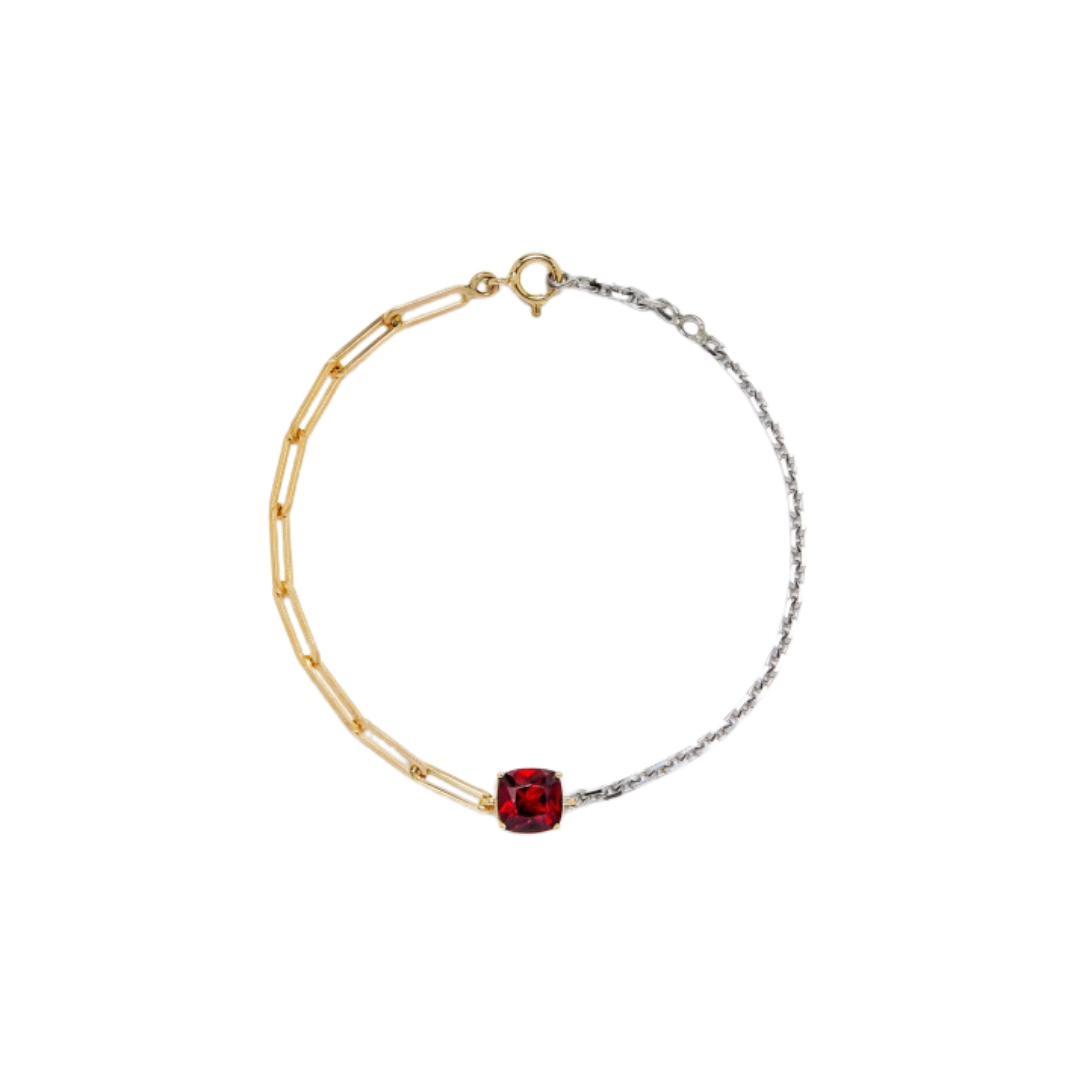
Yvonne Leon
Yvonne Leon
Maxi bracelet in gold, white gold and garnet
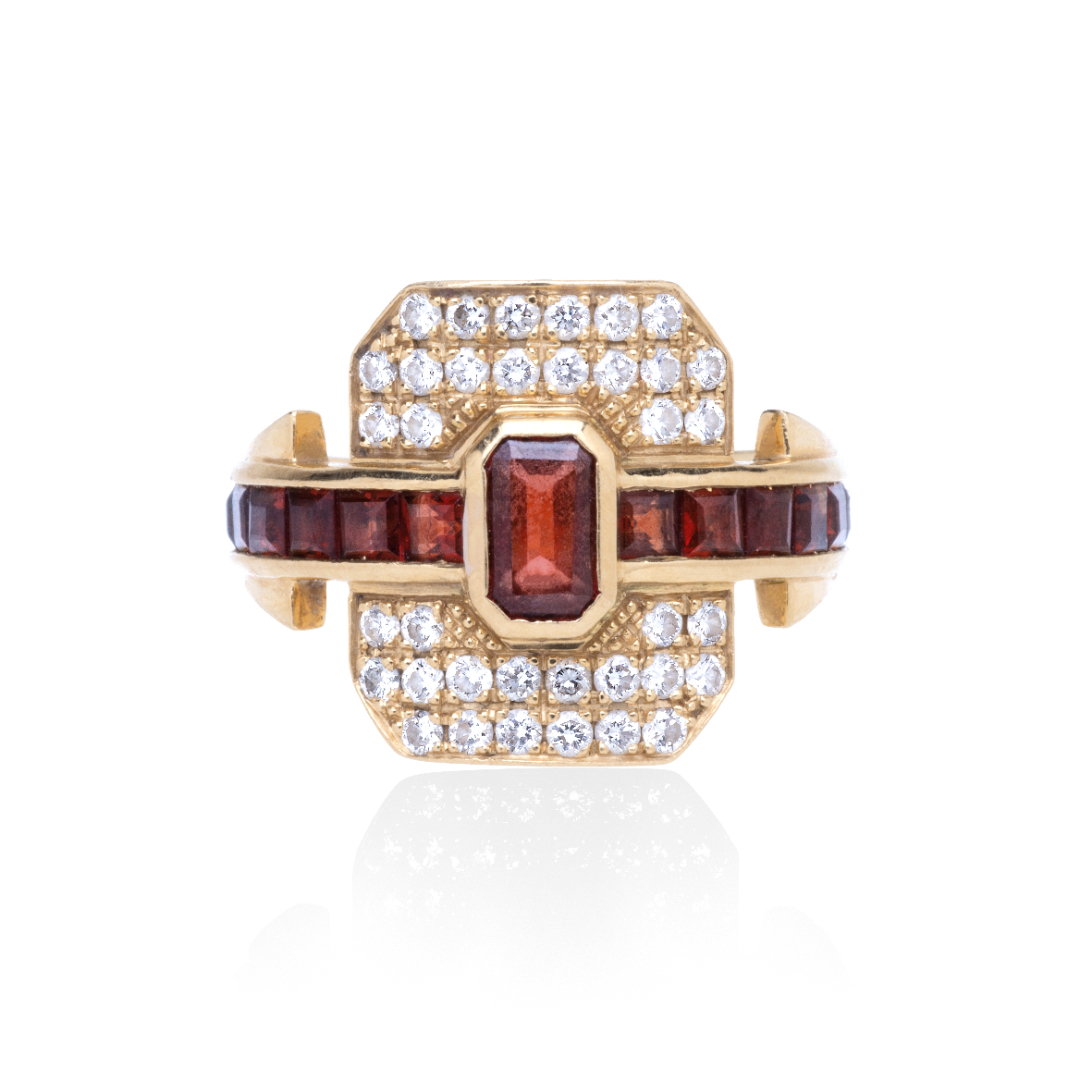
Rainbow K
Rainbow K
Ring in gold, garnet and diamond
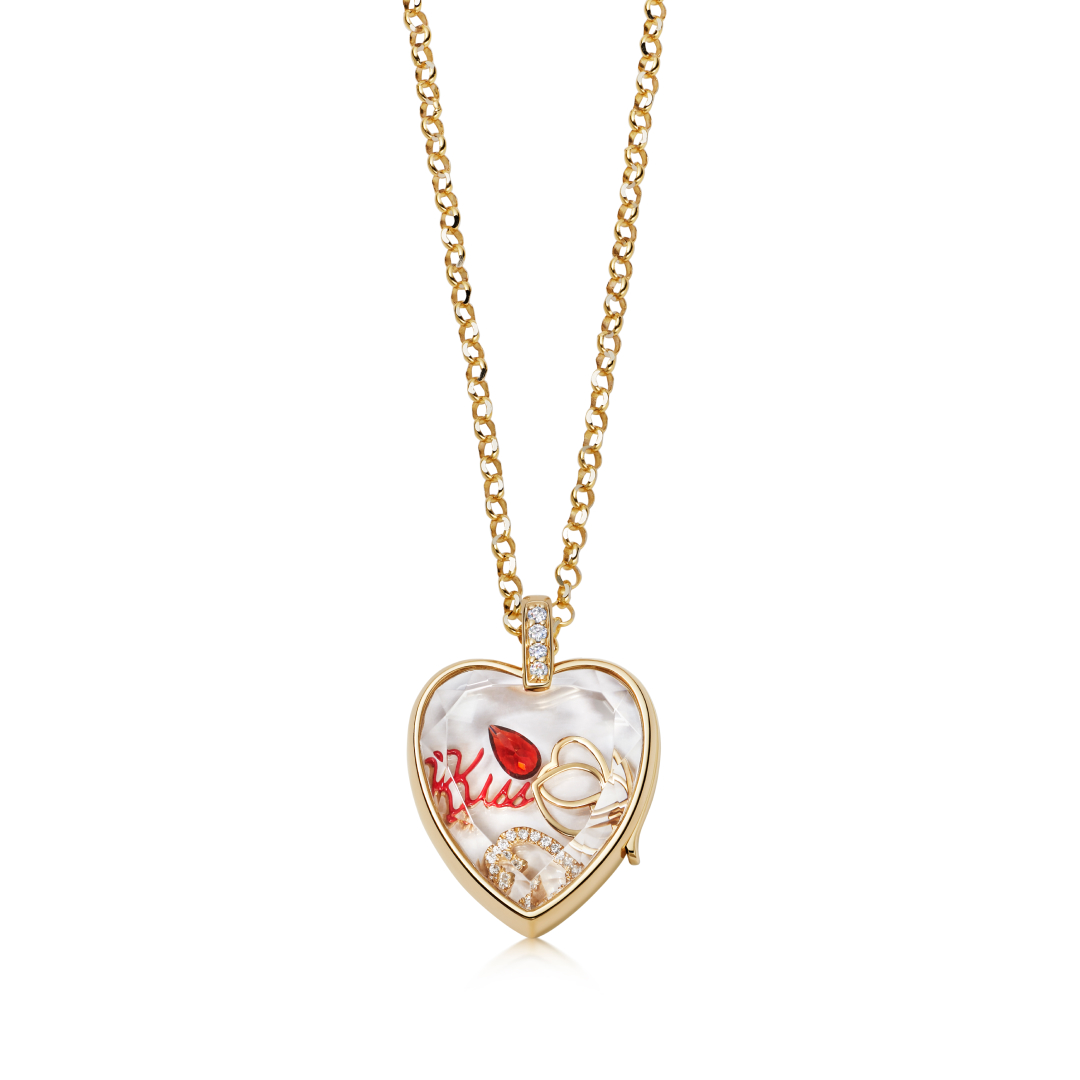
Loquet London
Loquet London
Amate Heart garnet pendant in gold featuring a garnet inside the locket
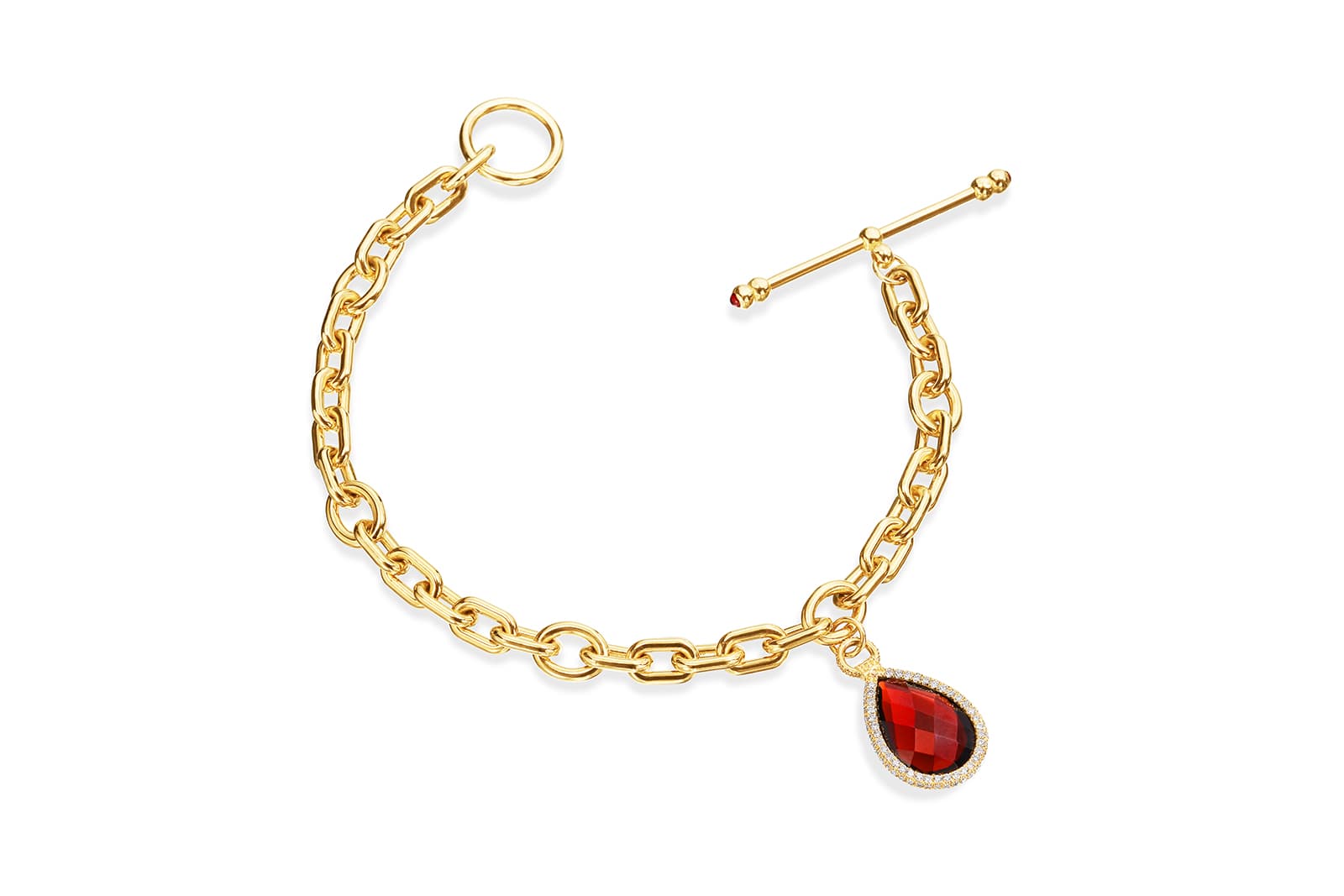
Nina Runsdorf
Nina Runsdorf
Flip Charm bracelet with garnet and diamonds in yellow gold
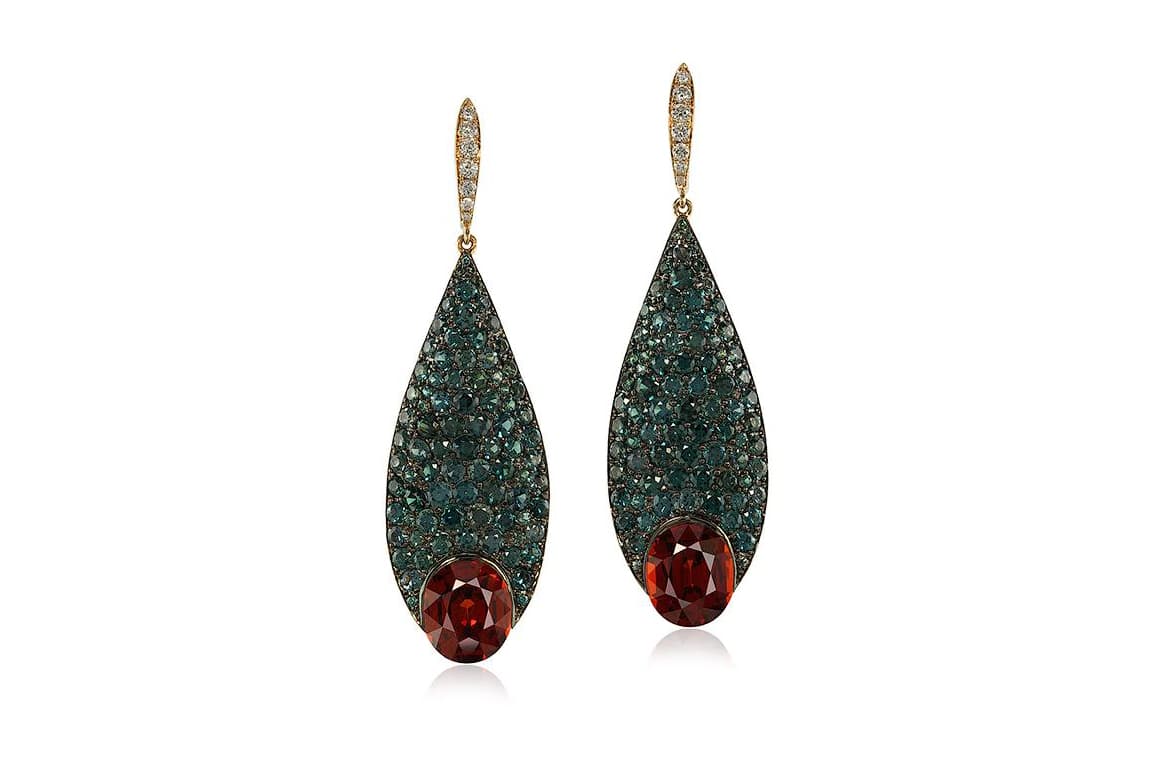
IVY New York
IVY New York
Earrings with 9.69ct spessartite garnets, 9.20ct colour changing garnets and spinels in pink and blackened gold
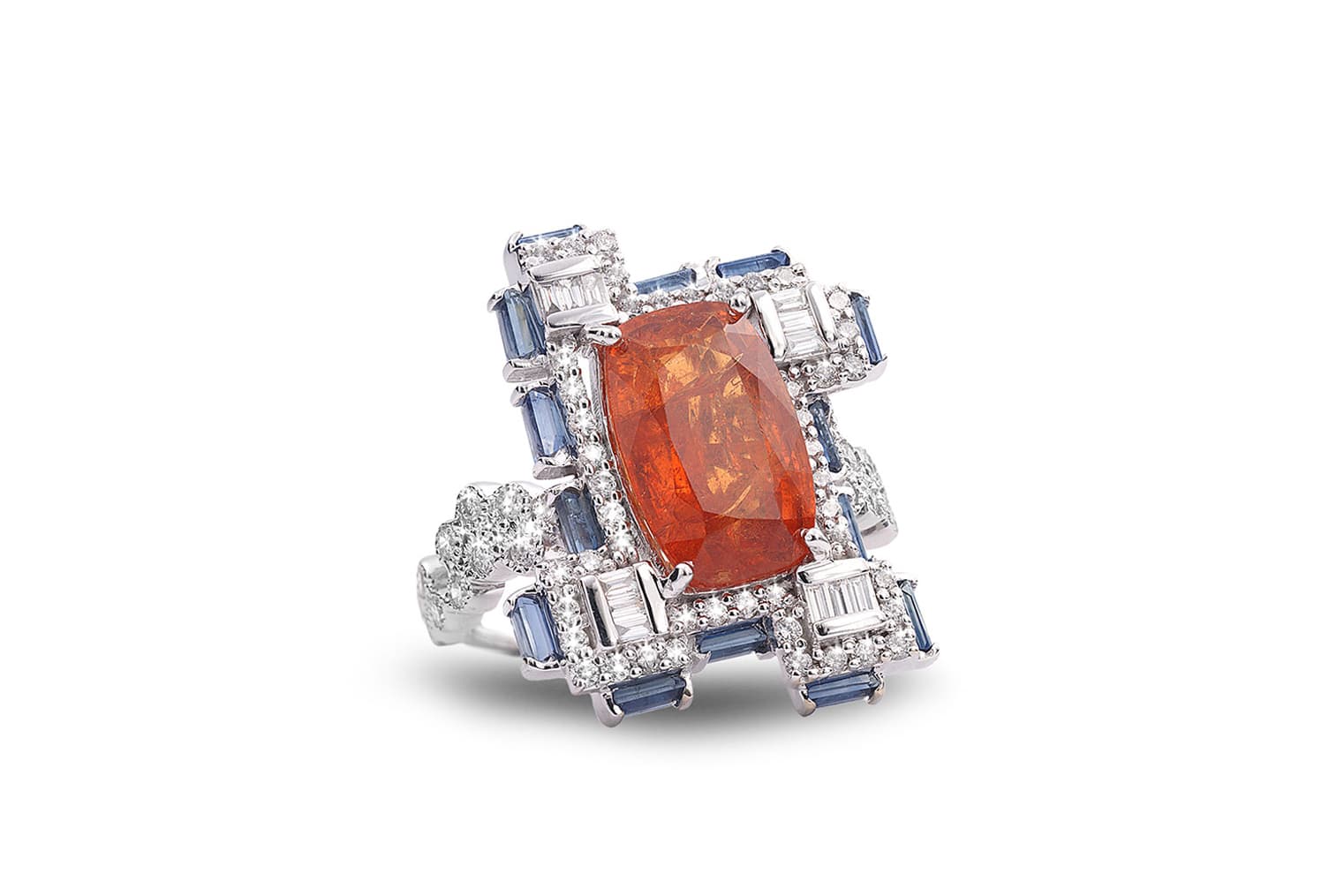
Coomi
Coomi
Trinity ring with mandarin garnet, sapphires and diamonds in white gold
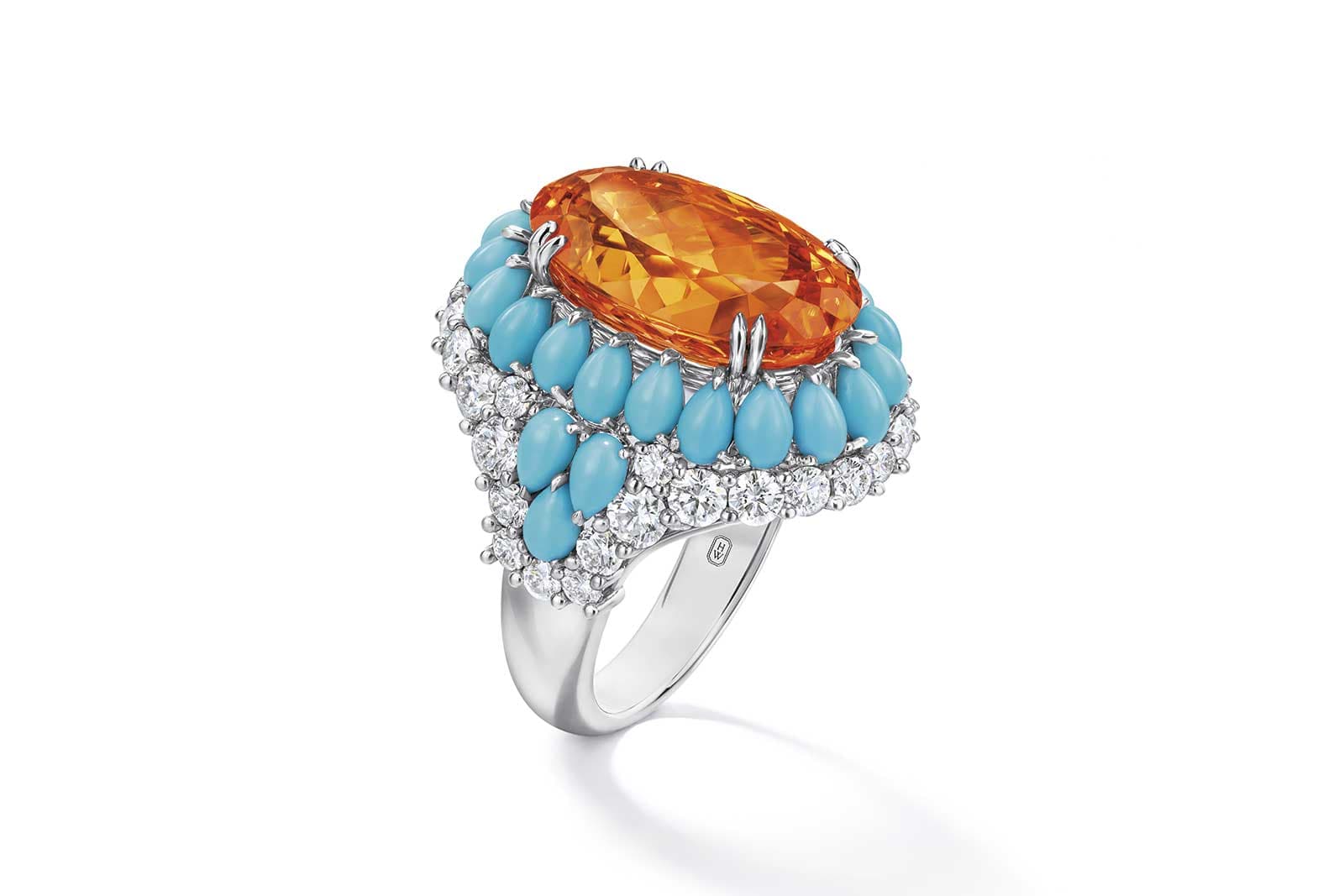
Harry Winston
Harry Winston
Candy collection ring with 16.69ct oval cut spessartite garnet, pear cut turquoise and diamonds in white gold
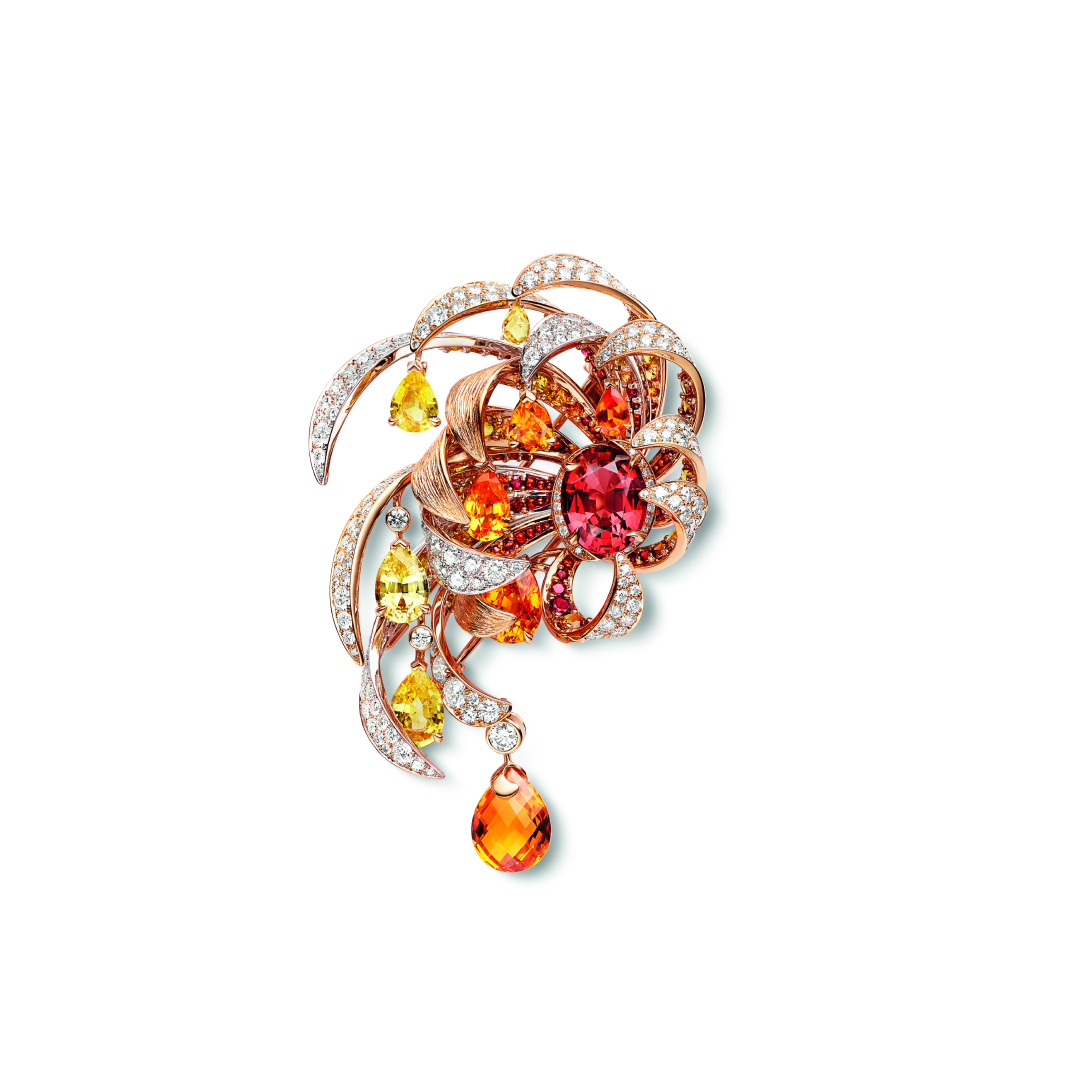
Chaumet
Chaumet
Soleil brooch in gold, garnet, spinel and diamond
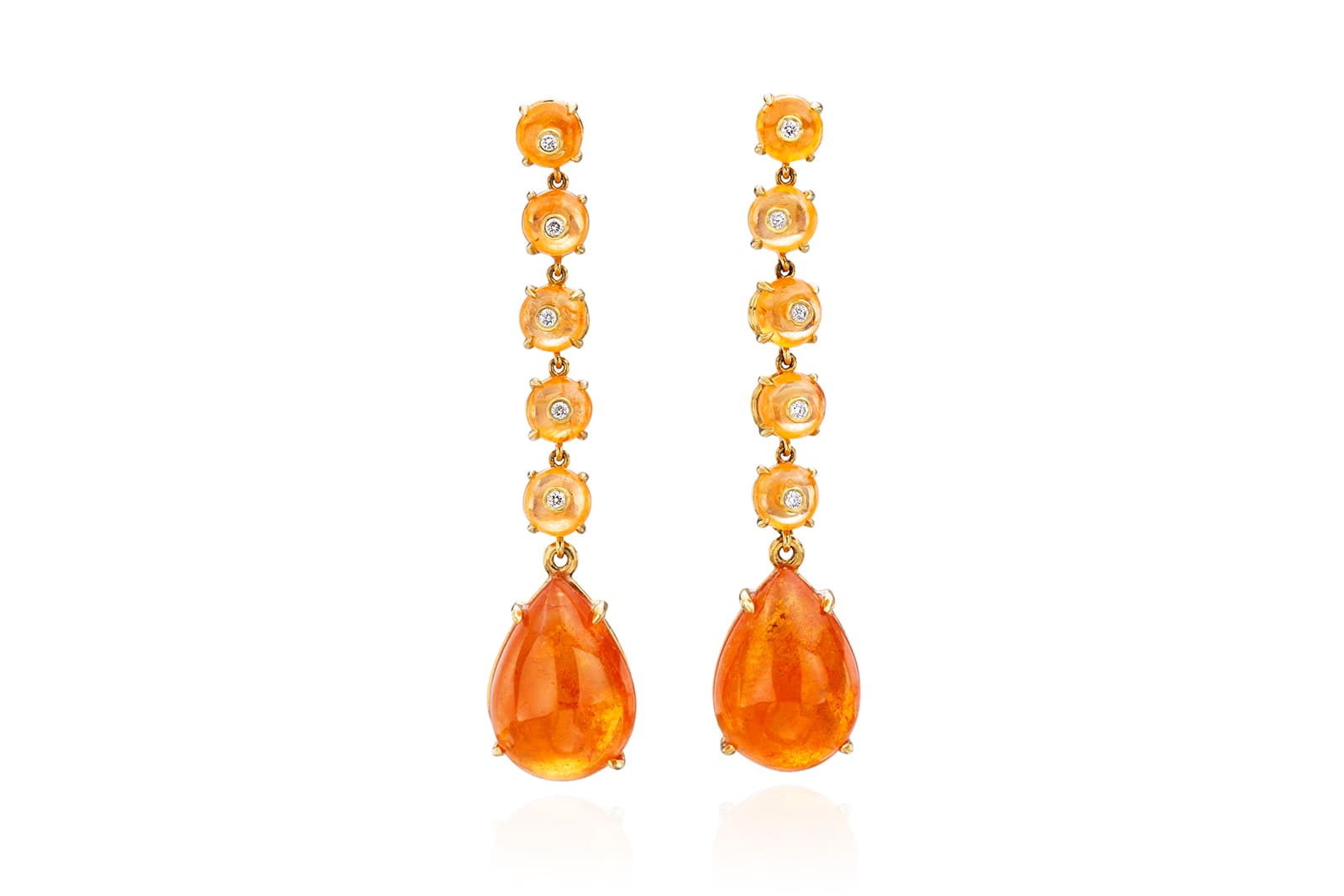
Nina Runsdorf
Nina Runsdorf
Earrings with 15ct cabochon spessartite garnet, spessartite garnet beads and diamonds in yellow gold
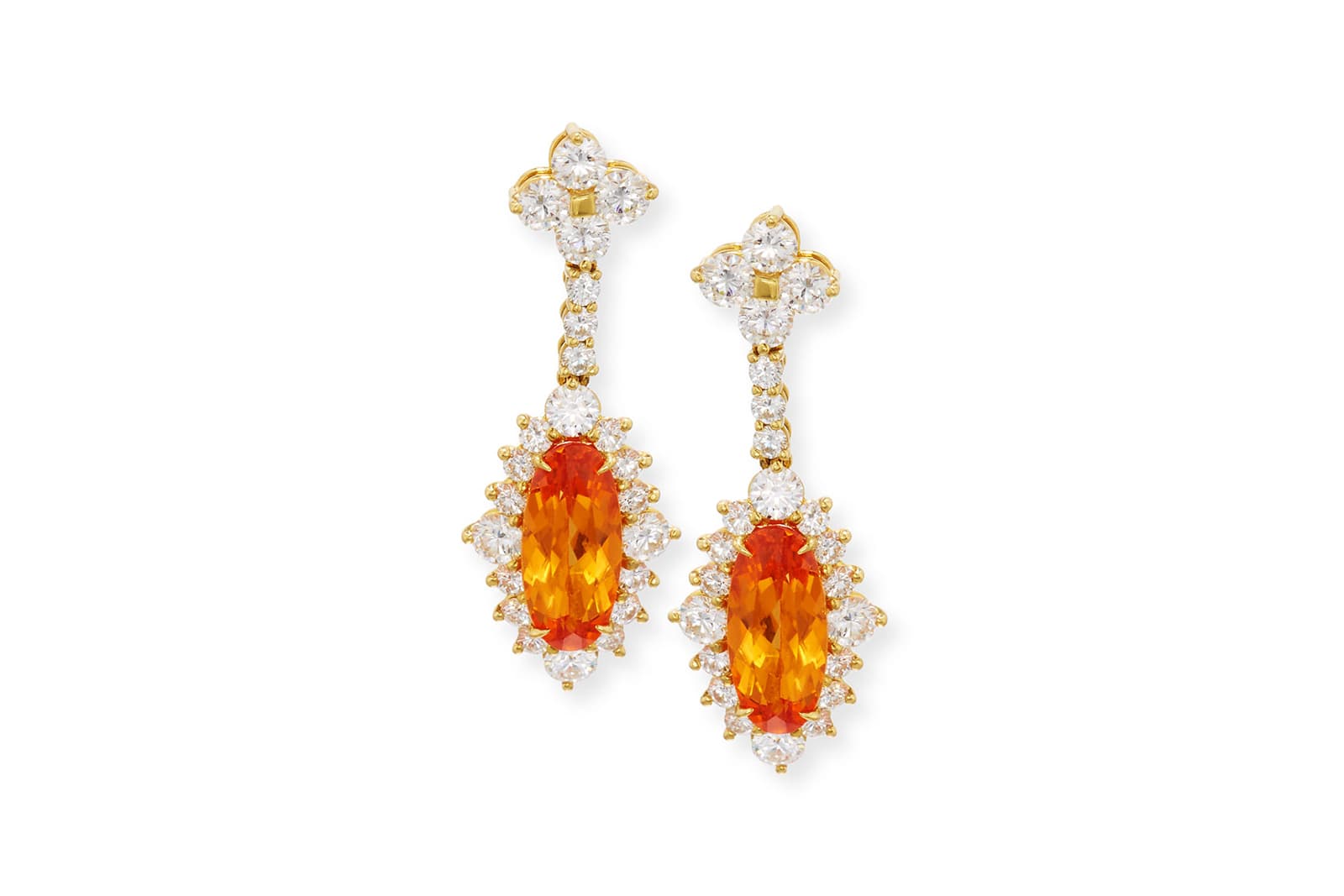
Robert Erich
Robert Erich
Earrings with mandarin garnet and diamonds in yellow gold
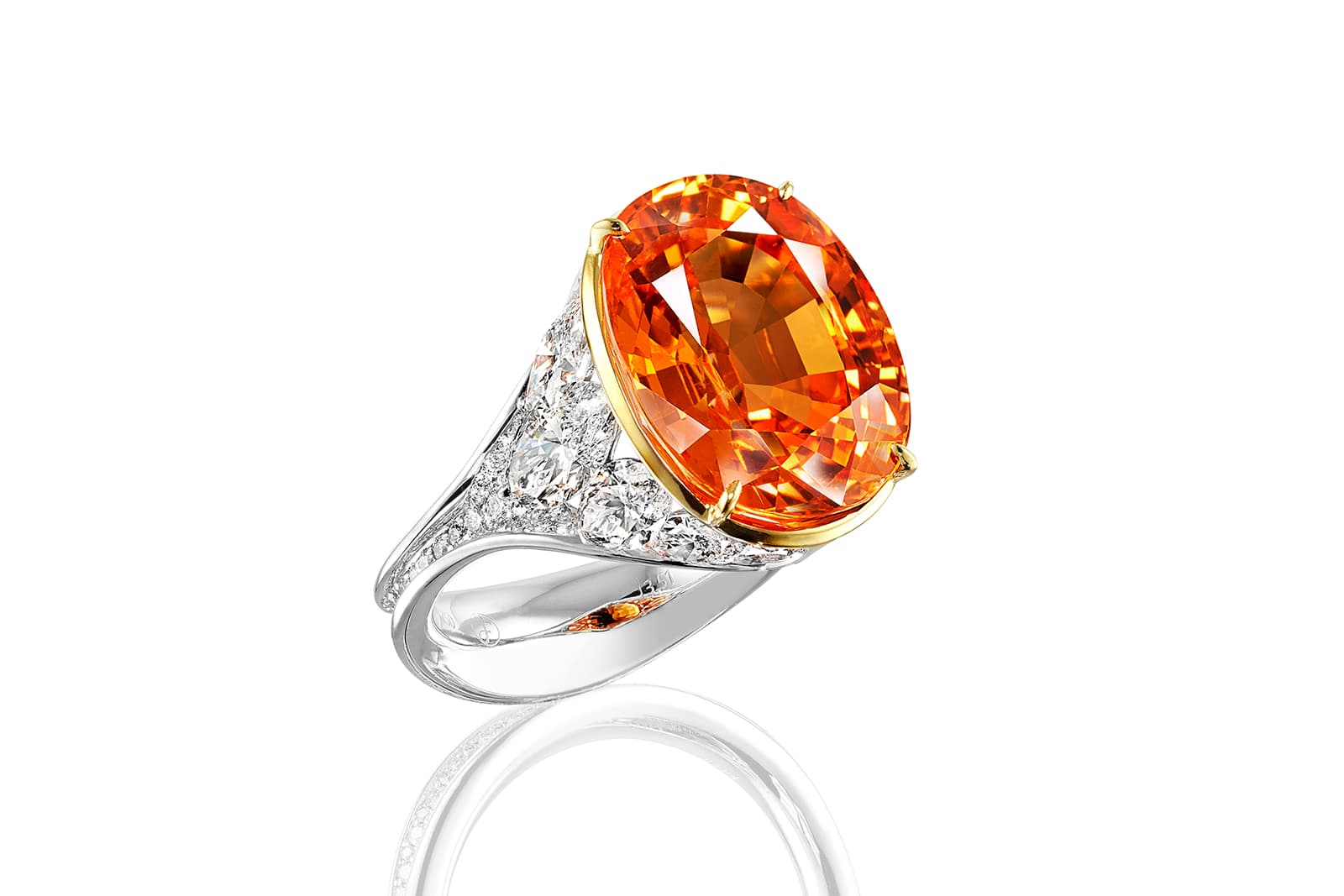
FORMS
FORMS
Ring with mandarin garnet and marquise diamonds in white gold
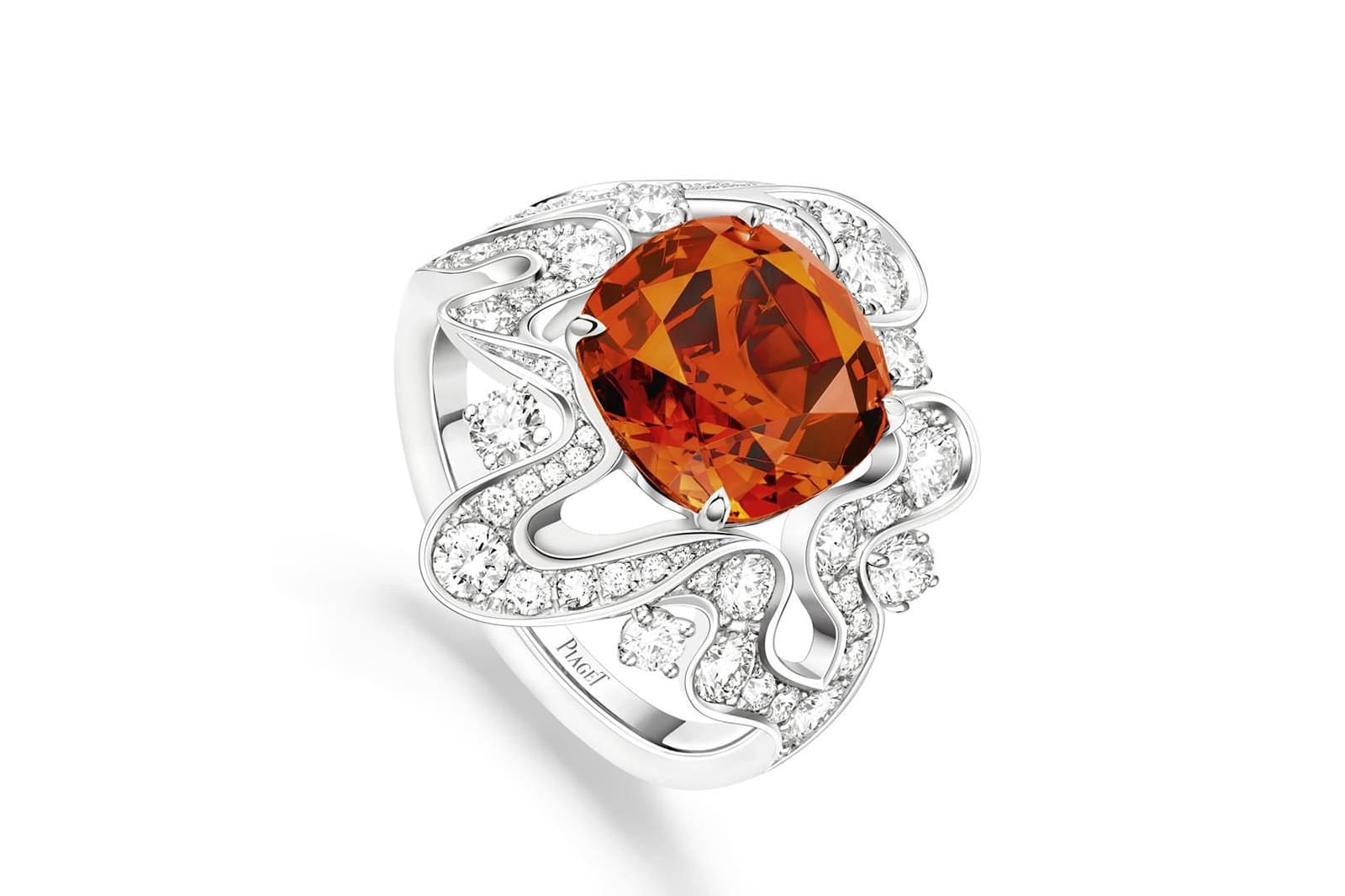
Piaget
Piaget
Golden Oasis collection Irresistible Attraction ring with spessartite garnet and diamonds in white gold
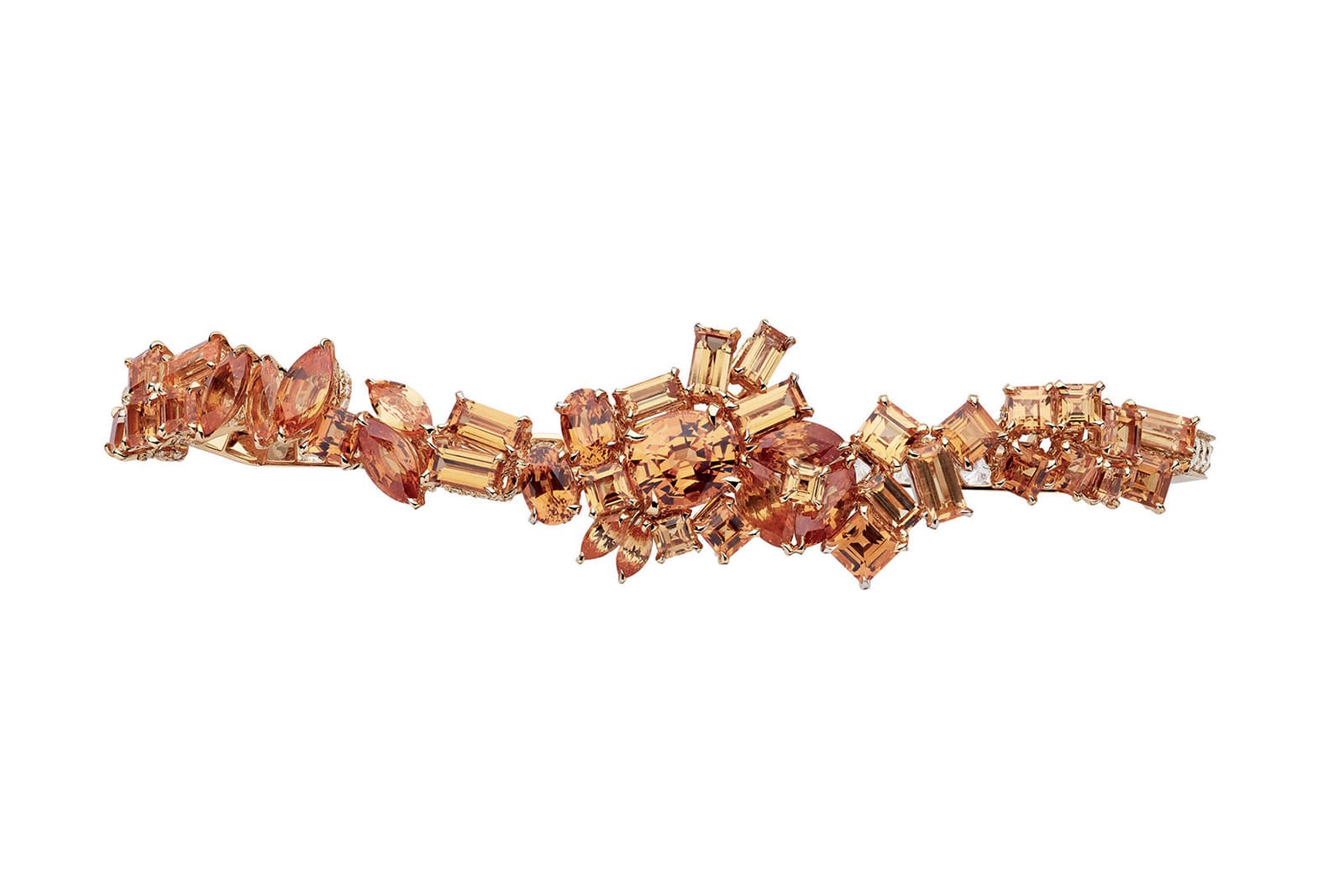
Dior
Dior
Gem Dior collection hand jewel with spessartite garnets in yellow gold
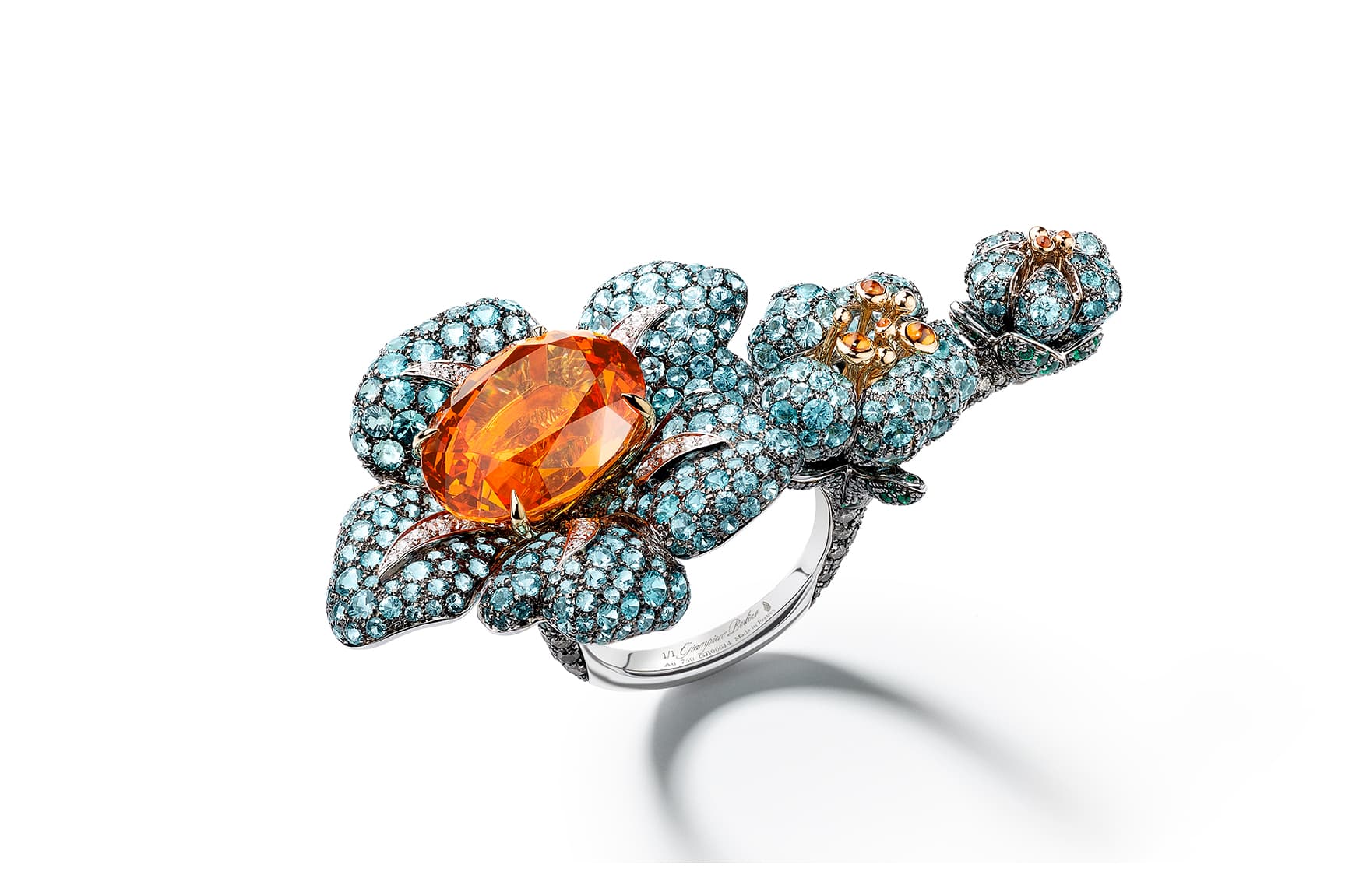
Giampiero Bodino
Giampiero Bodino
Primavera Flower ring with 13.66ct mandarin garnet, Paraiba tourmalines, emeralds, cognac and colourless diamonds in white and yellow gold
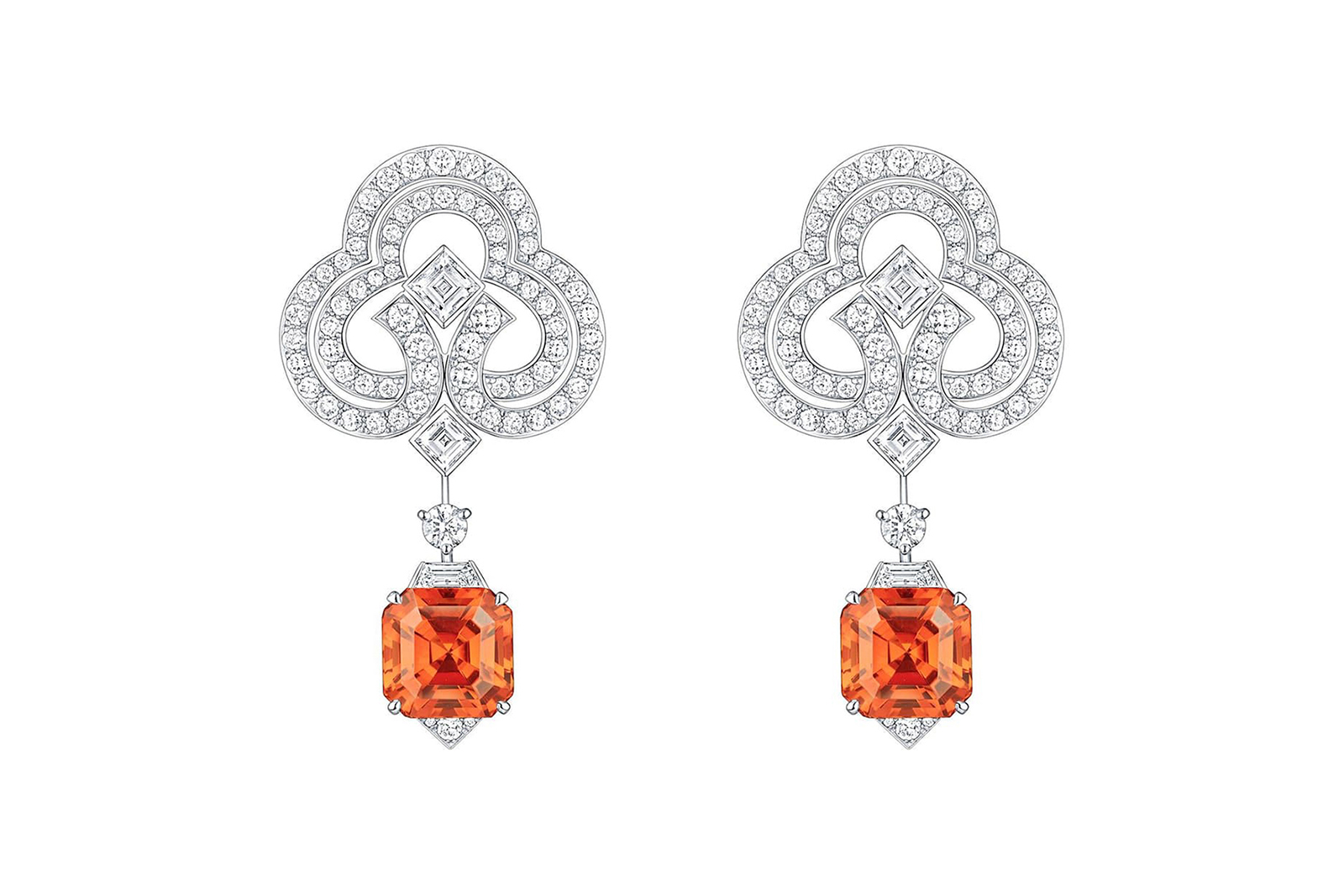
Louis Vuitton
Louis Vuitton
Conquêtes collection earrings with mandarin garnets and diamonds in white gold
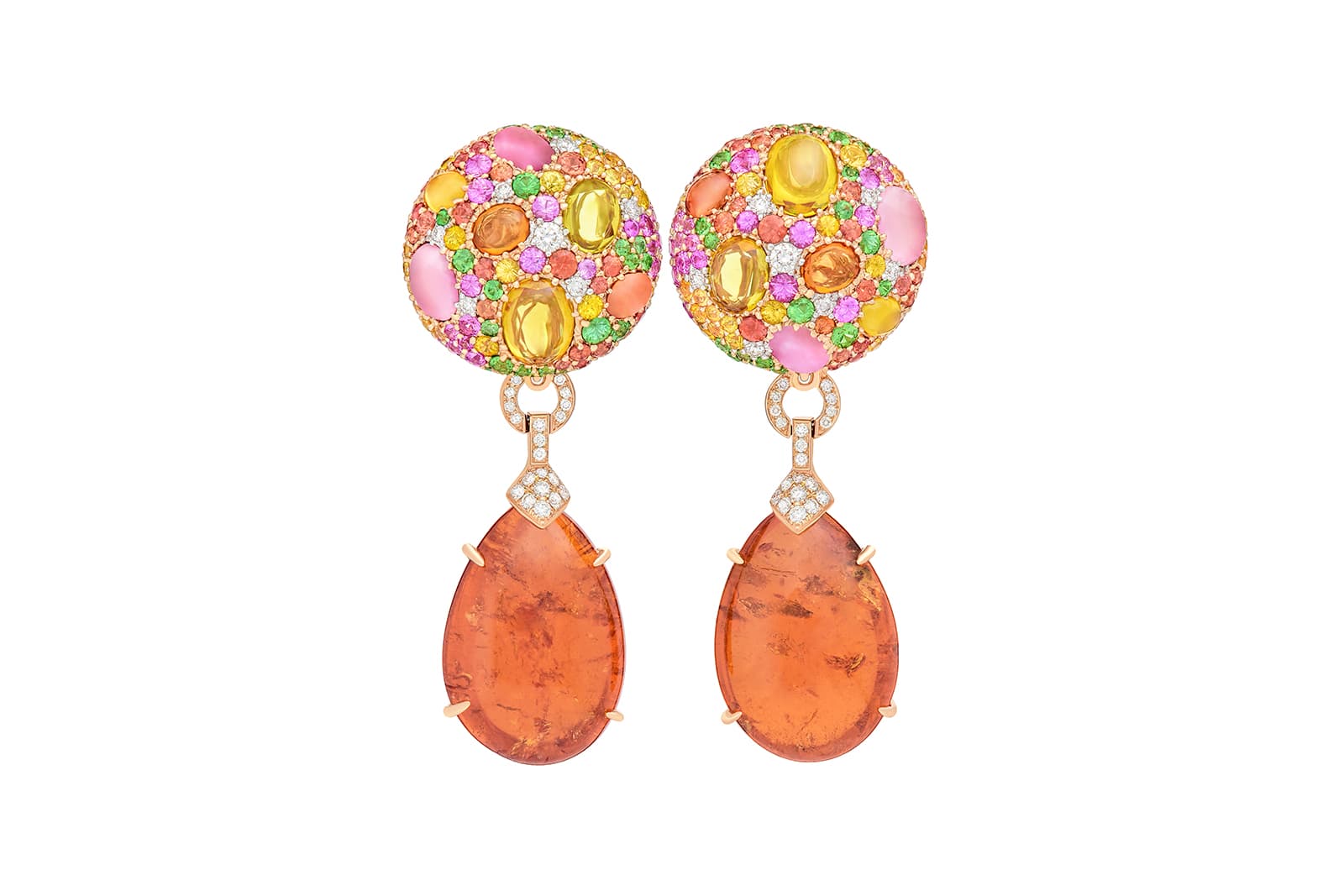
Margot McKinney
Margot McKinney
Earrings with spessartite garnets, diamonds, tsavorite garnets and sapphires in yellow gold
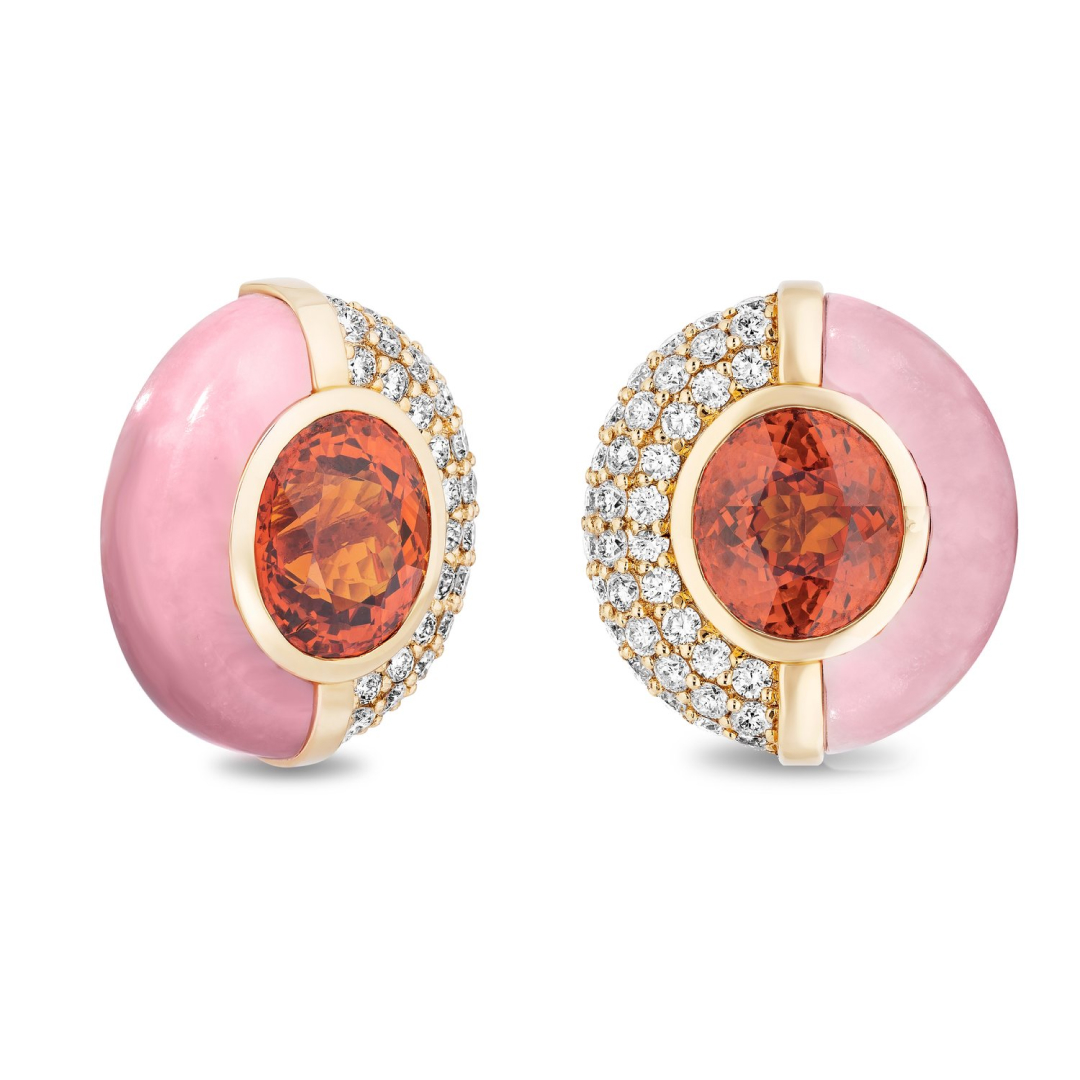
Mason and Books
Mason and Books
Earrings in gold, garnet and diamond
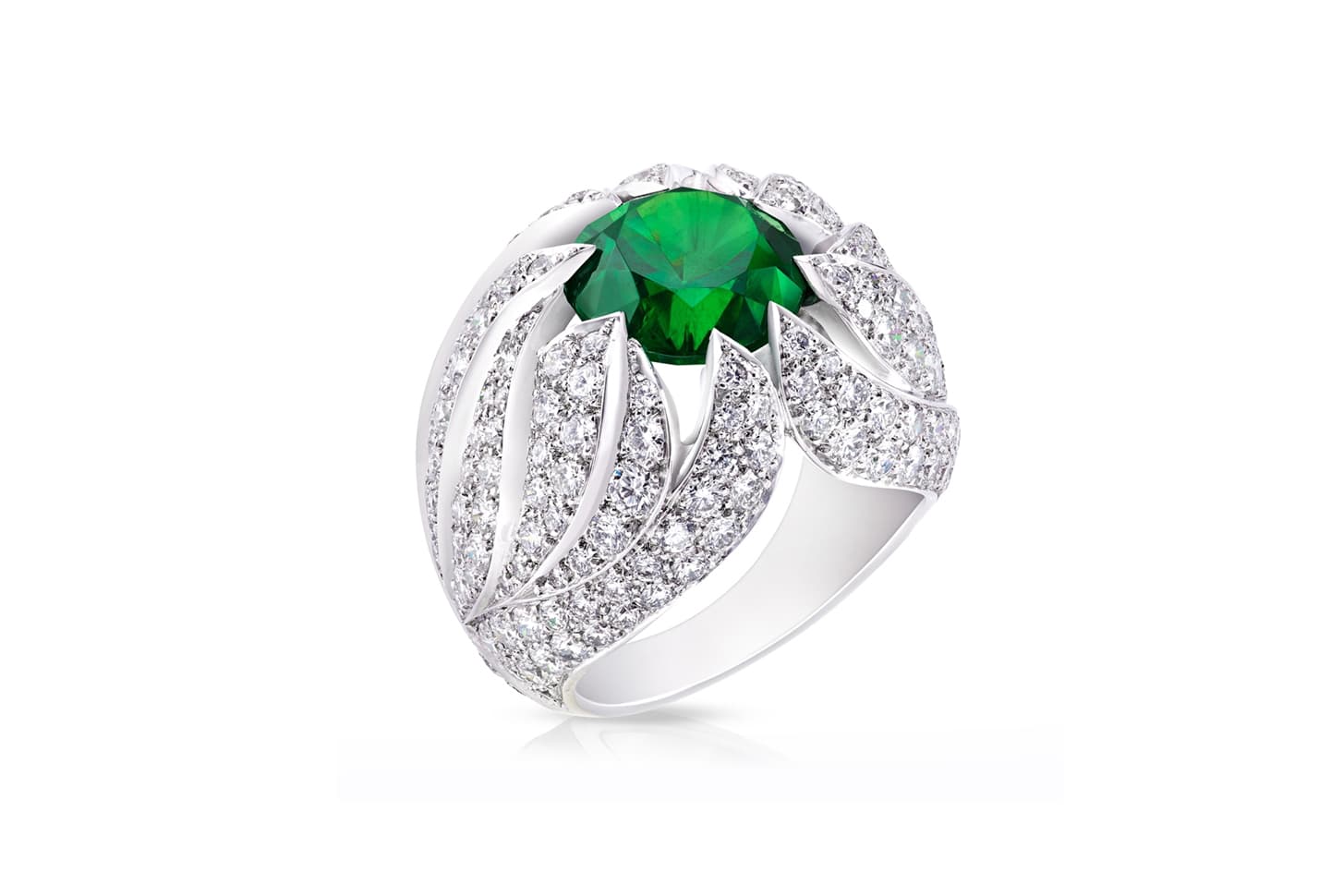
Faberge
Faberge
White Fire ring with 5.68ct demantoid garnet and diamonds in white gold
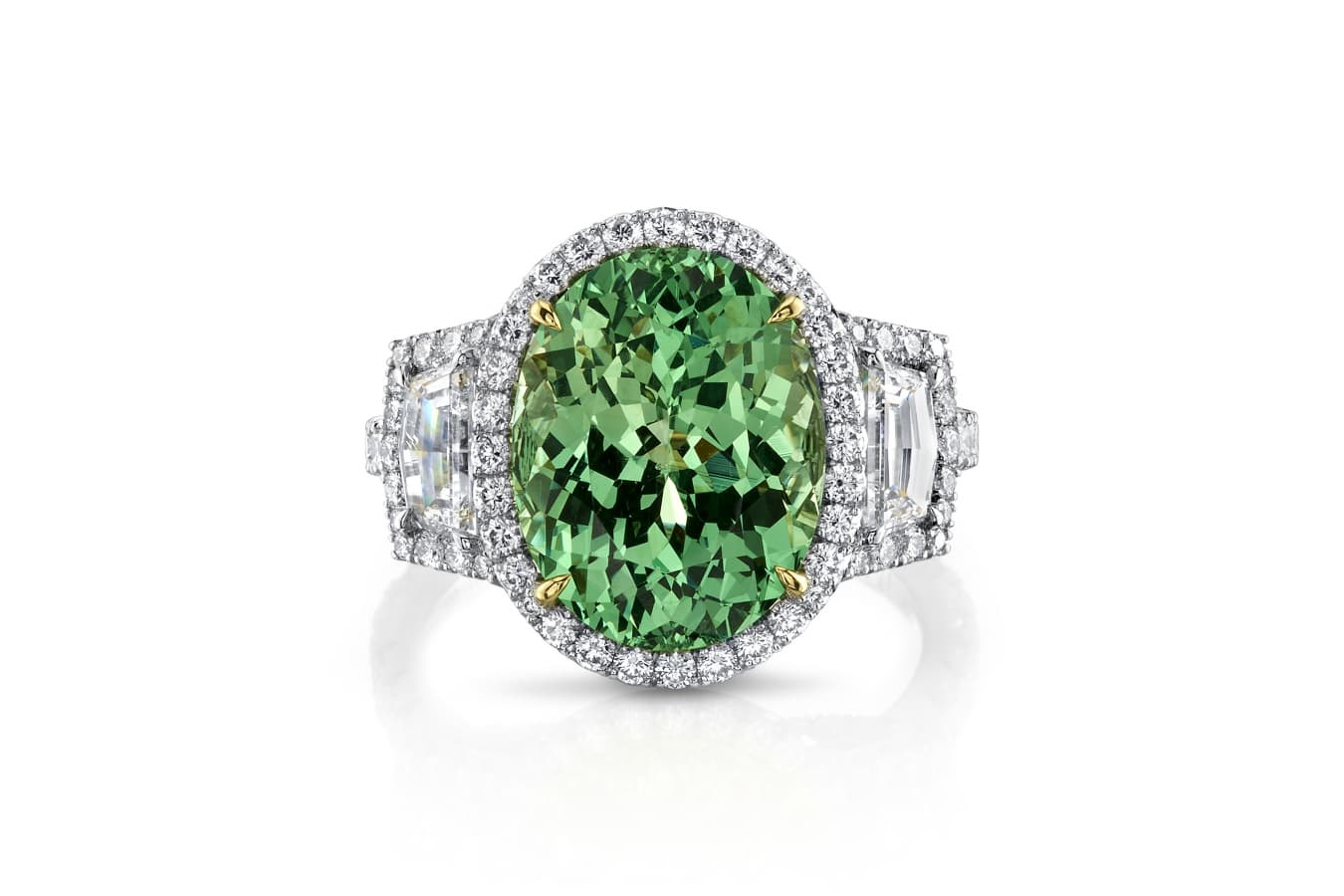
Omi Privé
Omi Privé
Ring with 6.77ct tsavorite garnet and diamonds in white gold
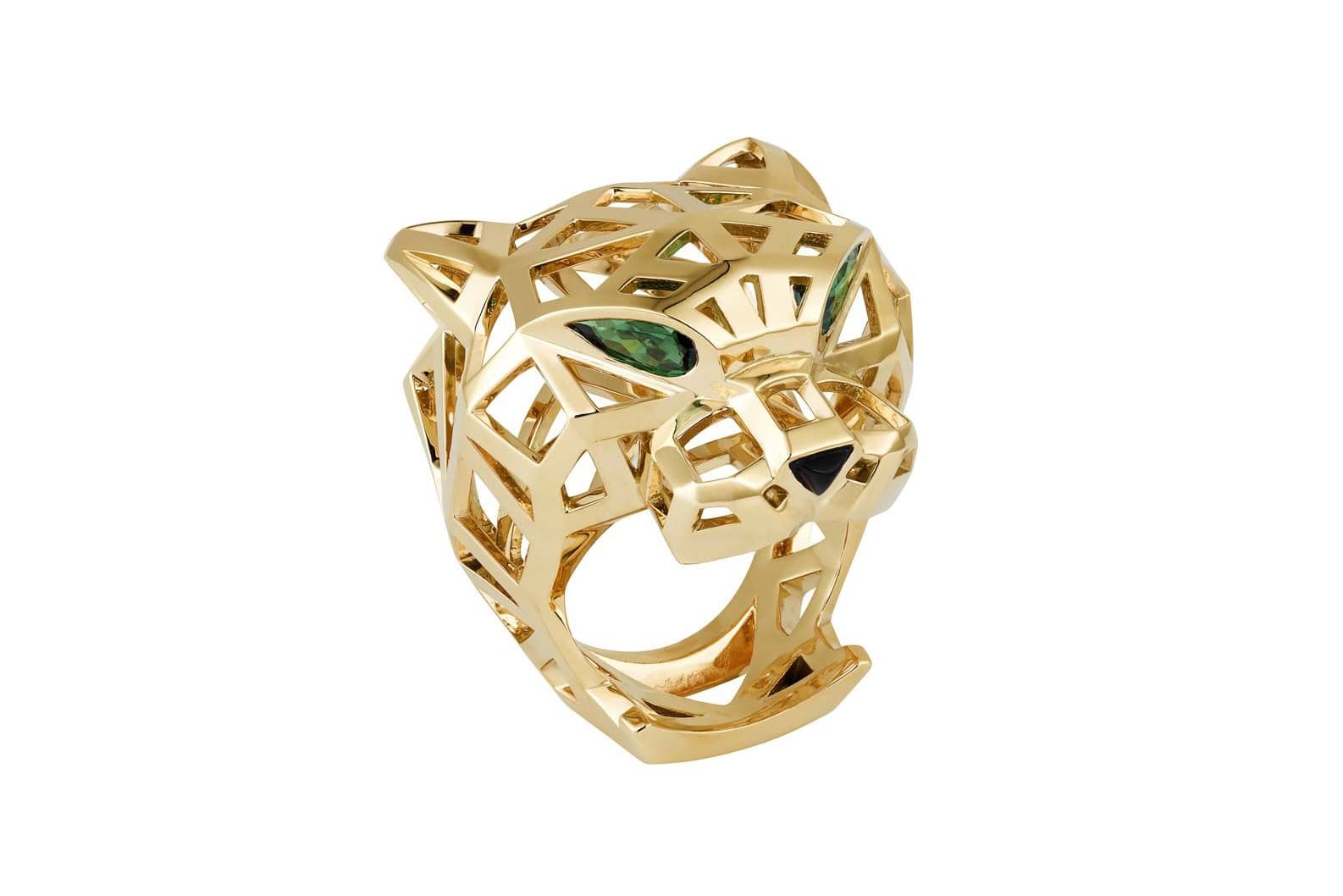
Cartier
Cartier
Panthere de Cartier ring with tsavorite garnets and onyx in yellow gold
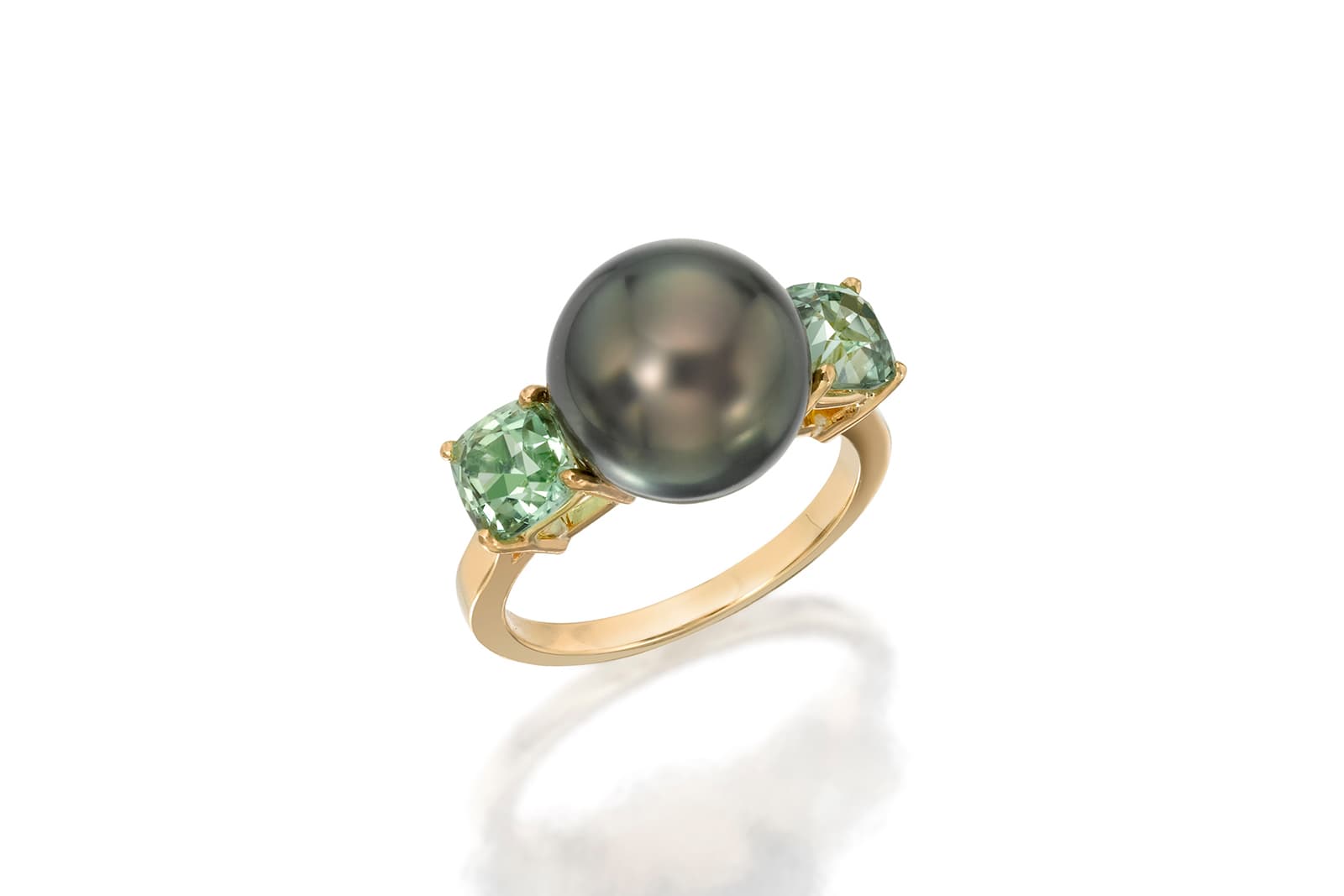
Assael
Assael
Ring with Tahitian pearl and demantoid garnets in yellow gold

WORDS
Livia Primo Lack , a Watches and Jewelry journalist and content creator, has covered all aspects of luxury jewels and timepieces. With a strong background in the editorial world, she has developed a keen eye for emerging designers as well as for groundbreaking innovations from iconic brands
